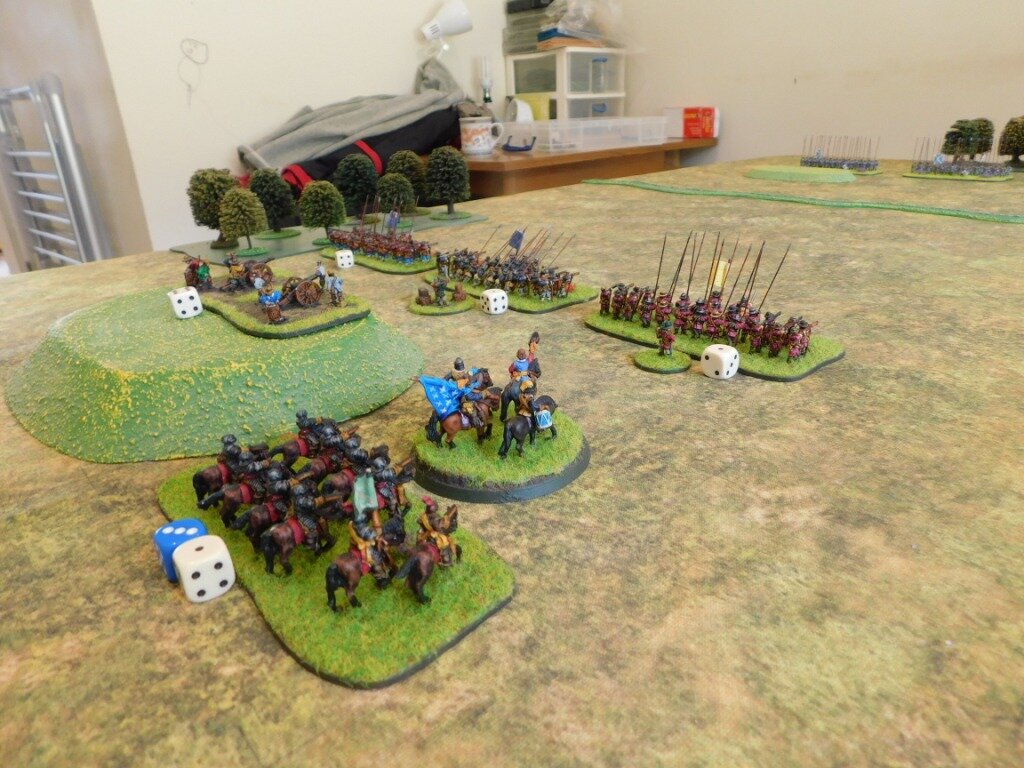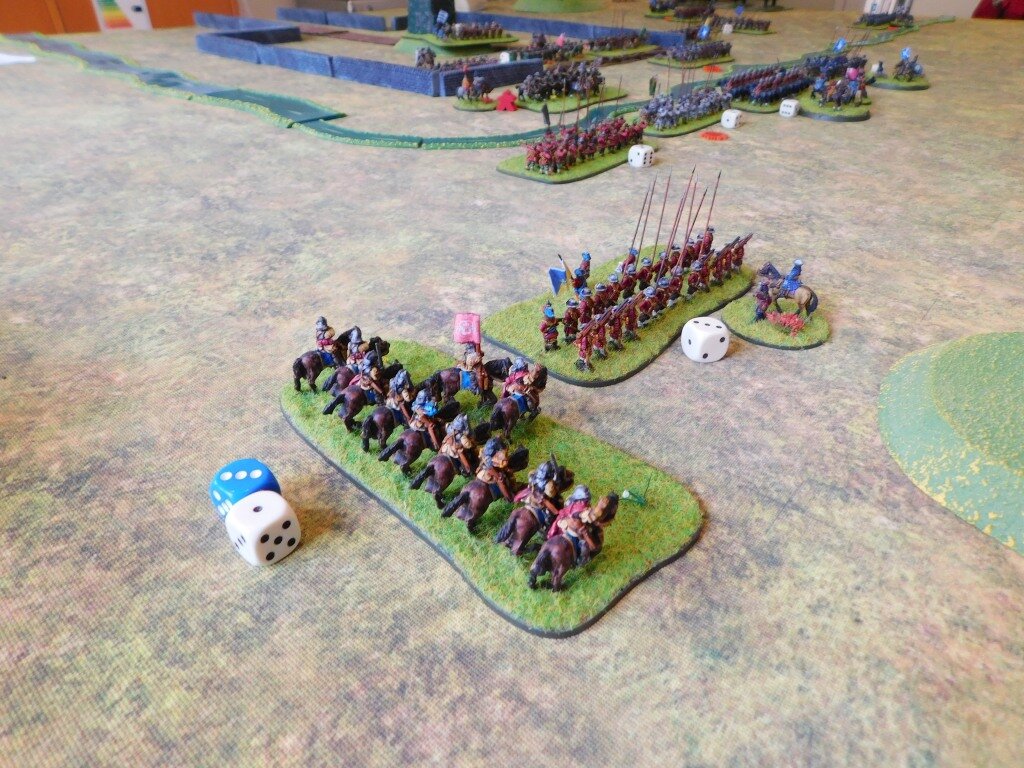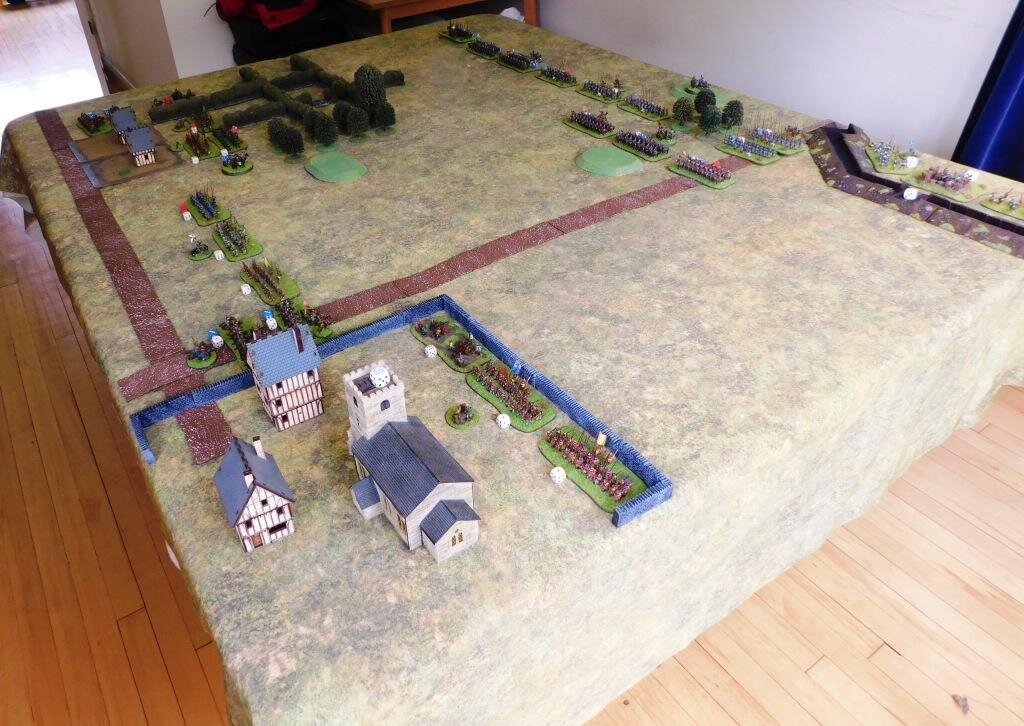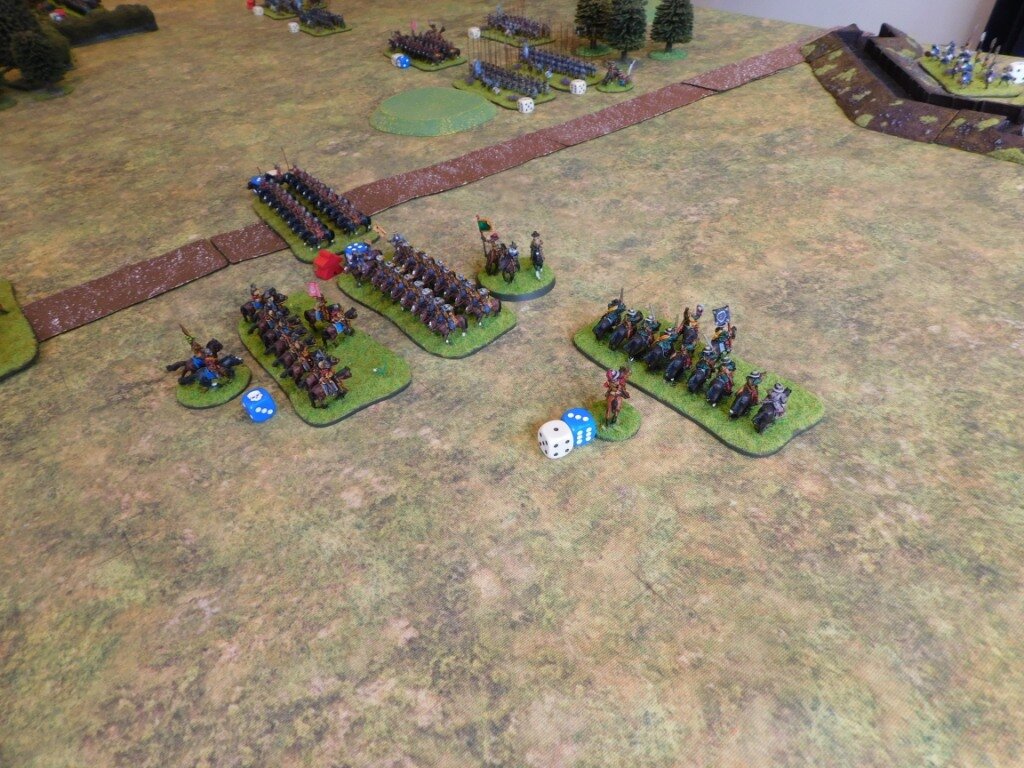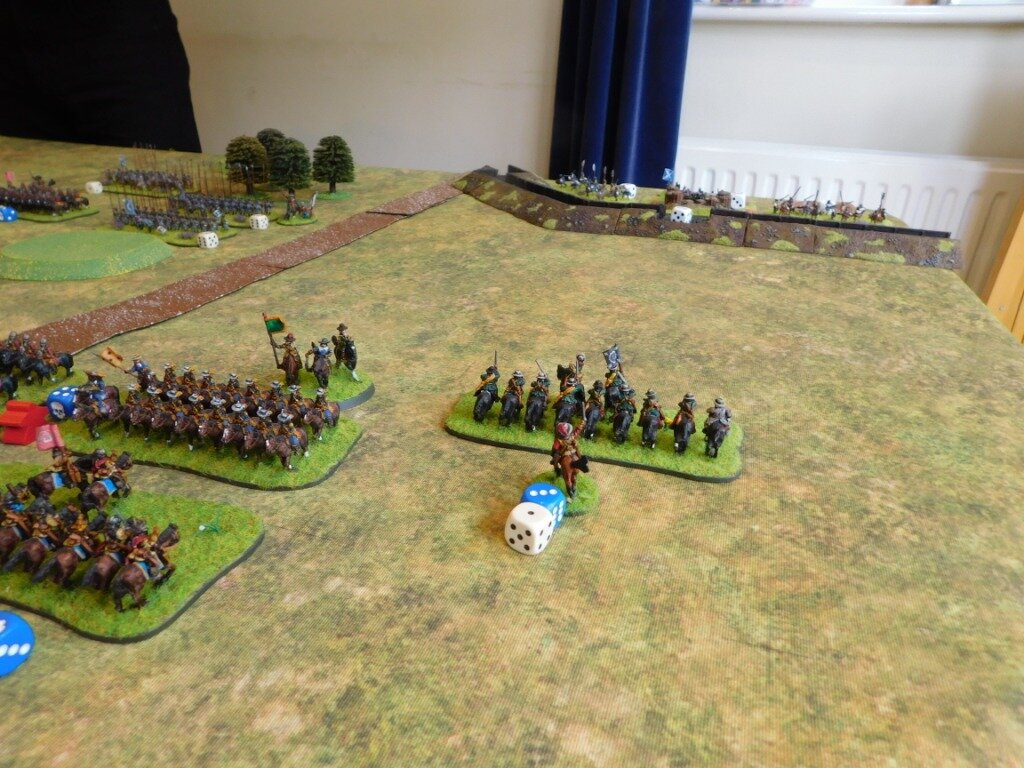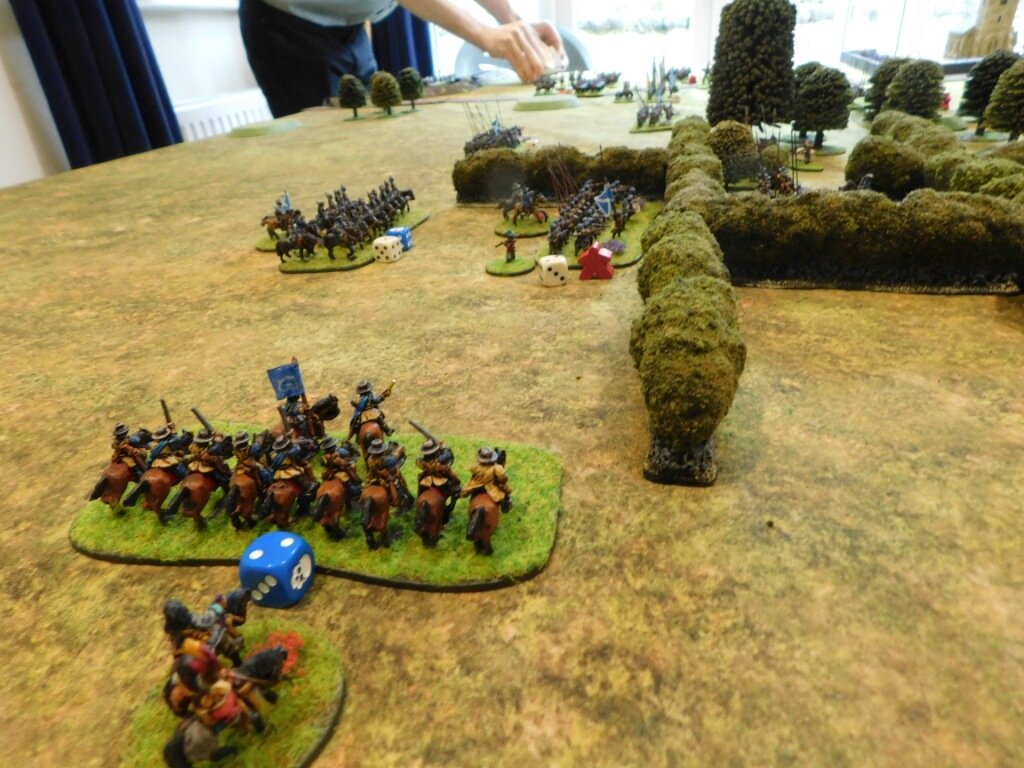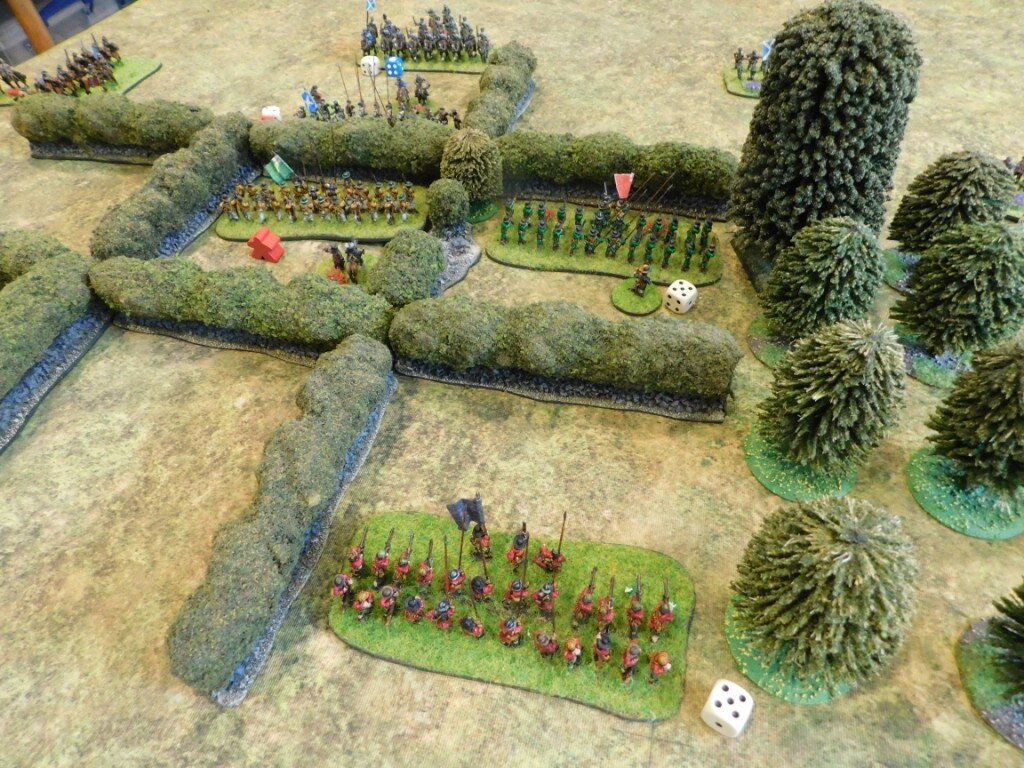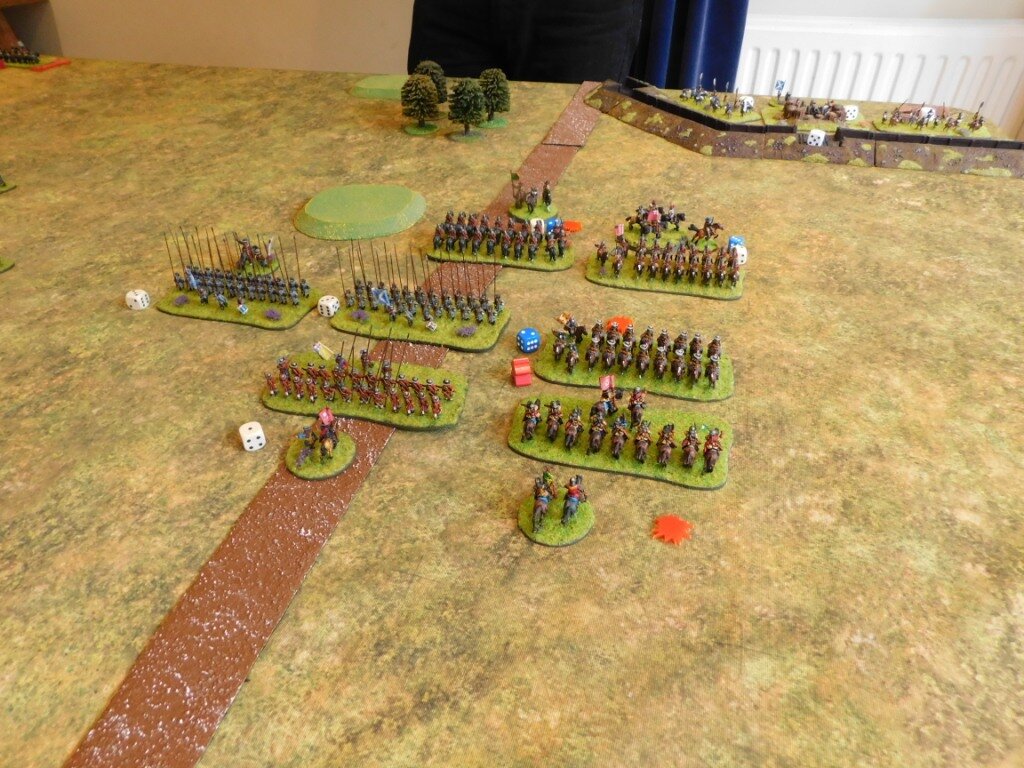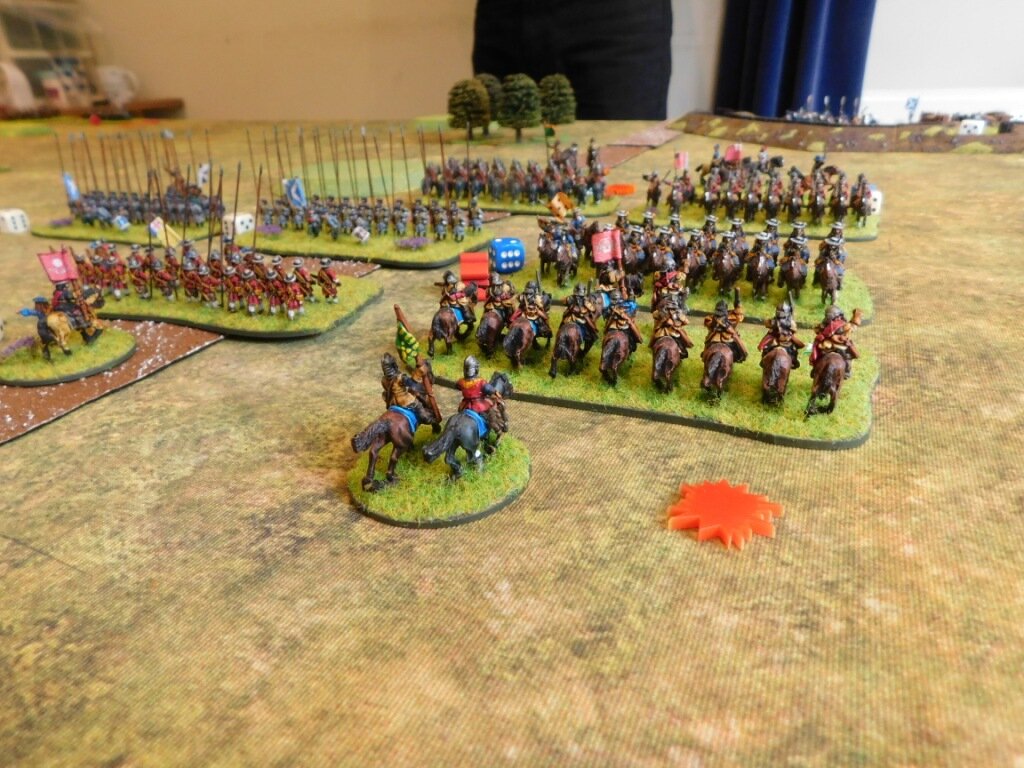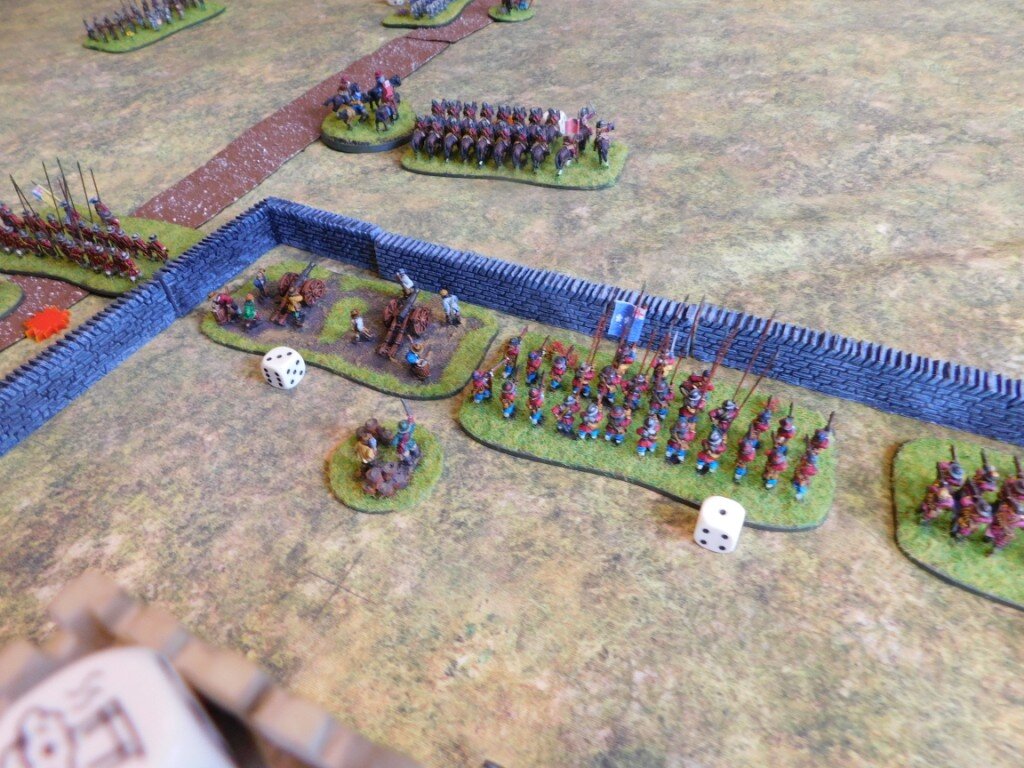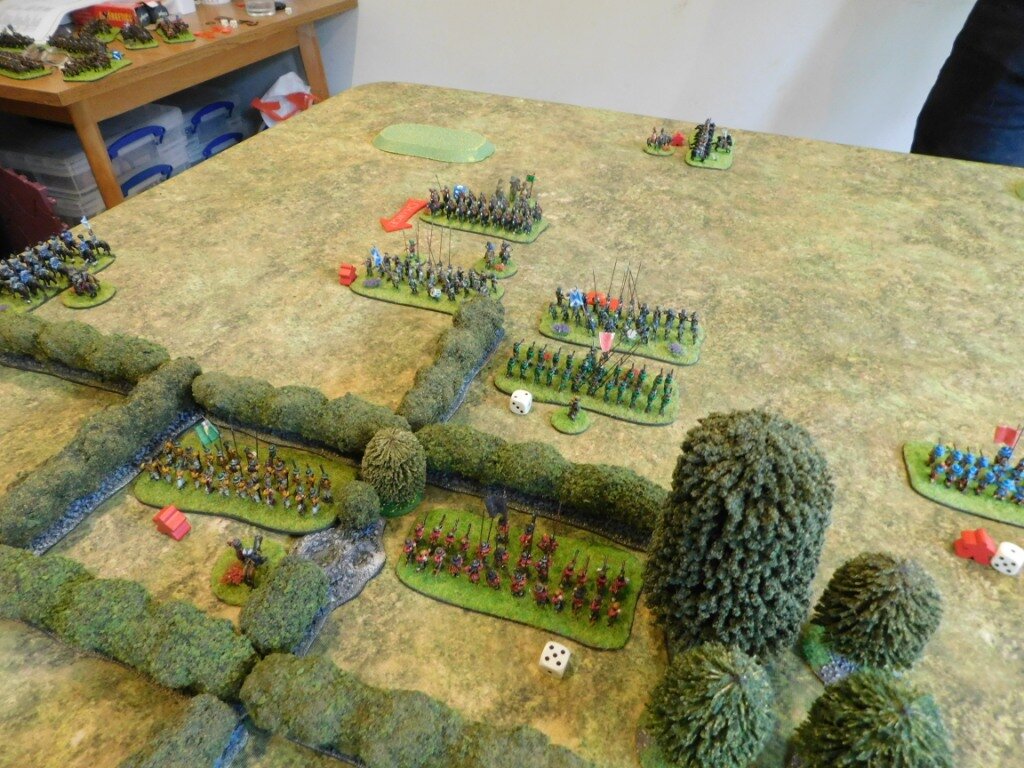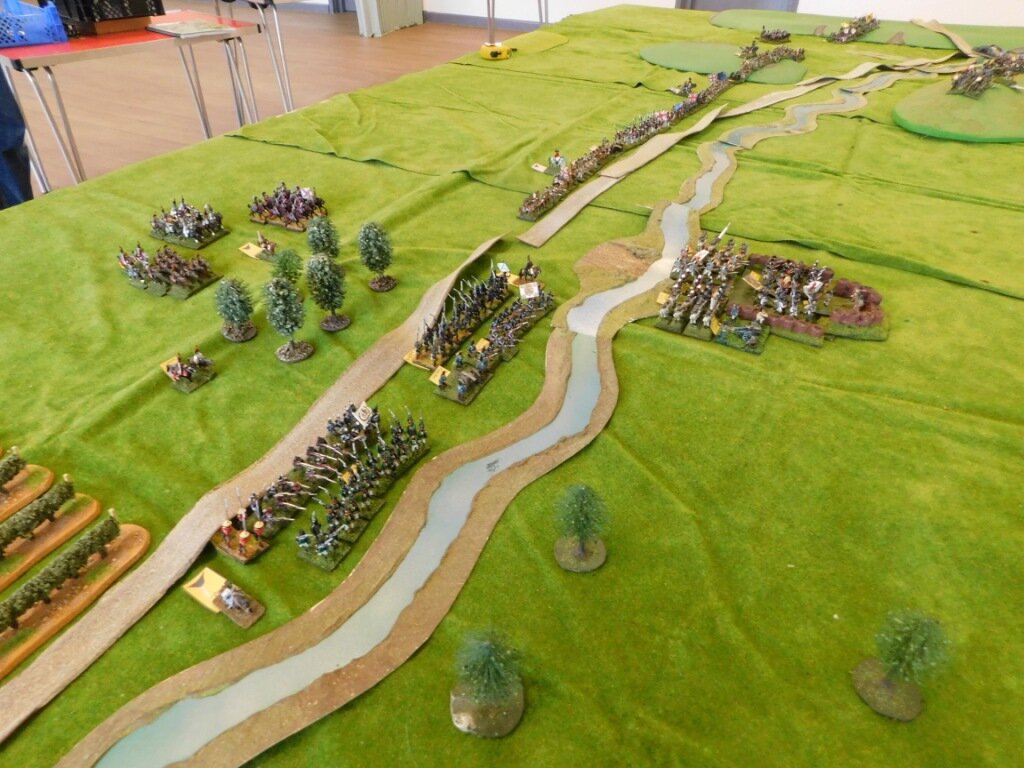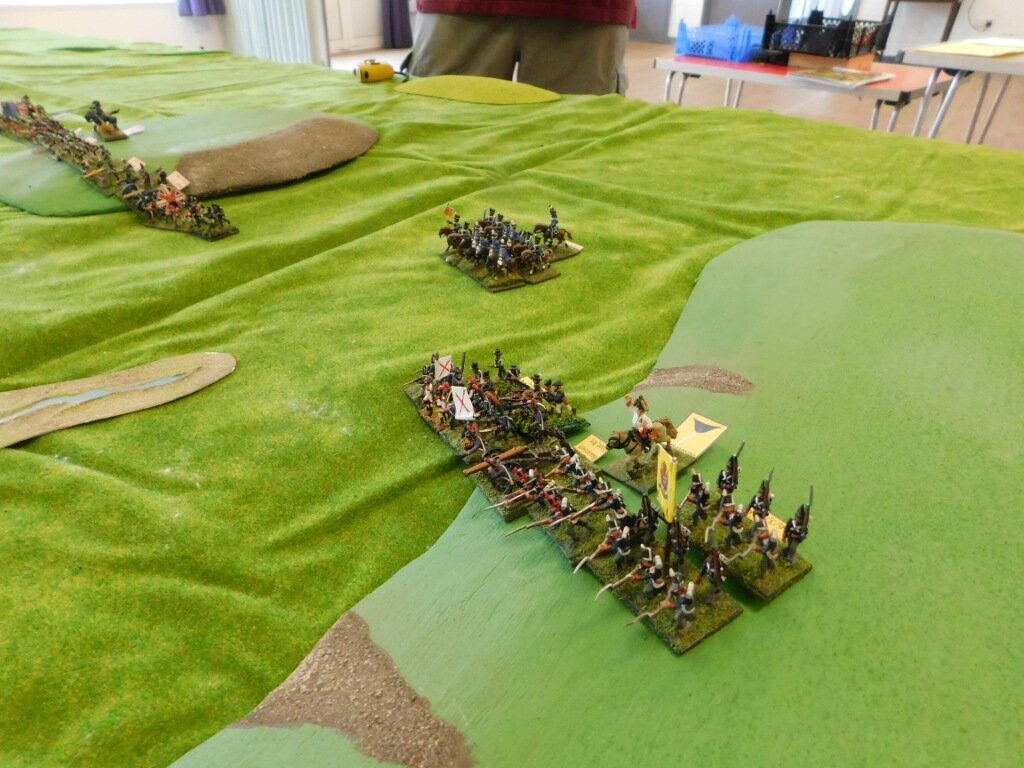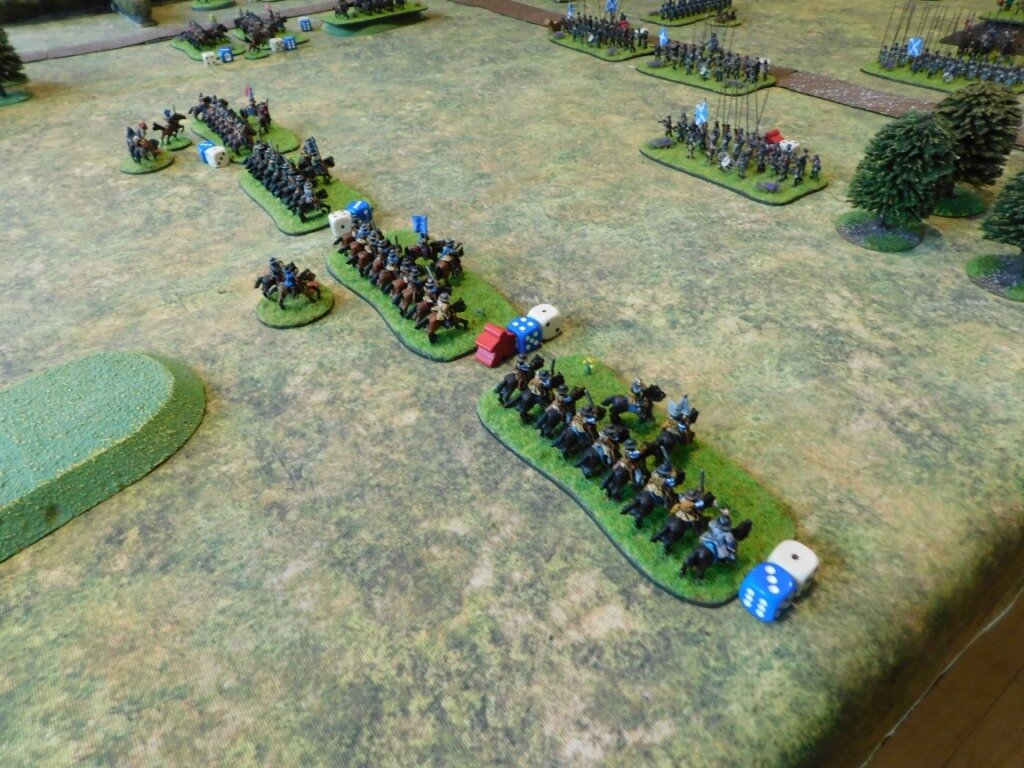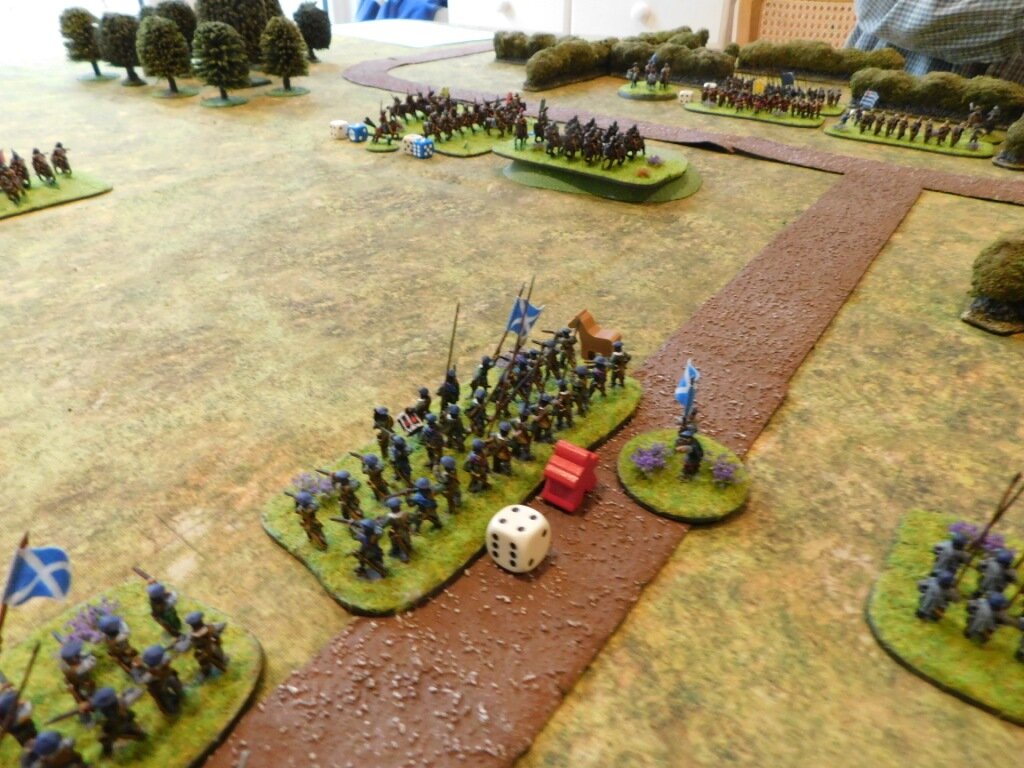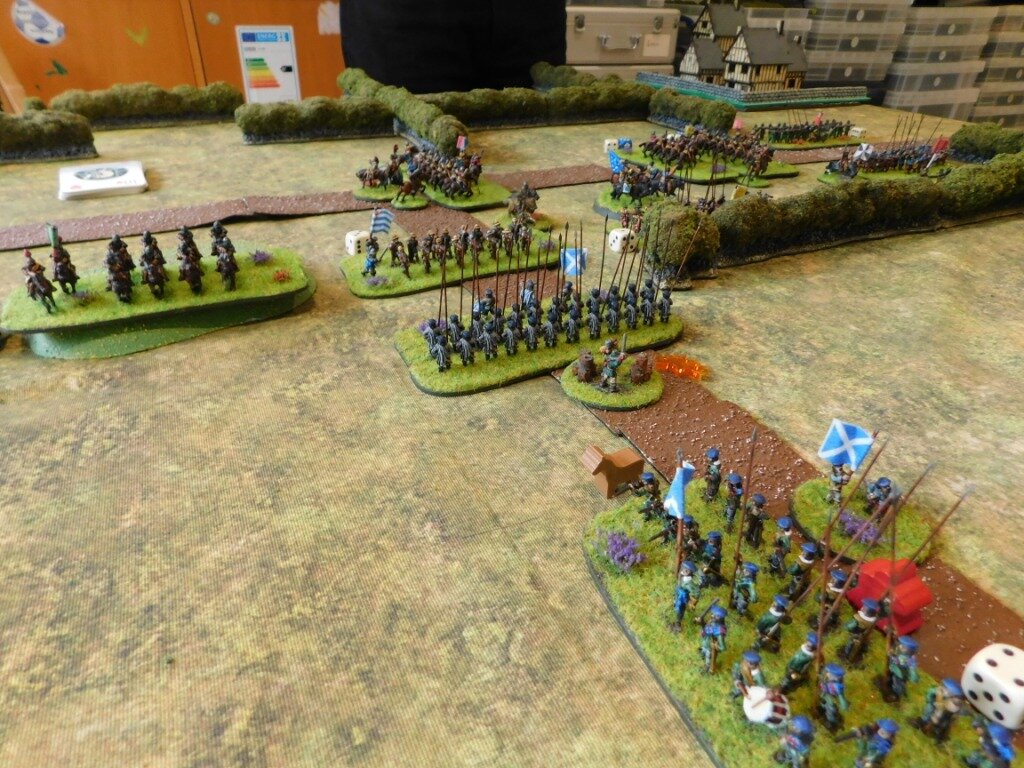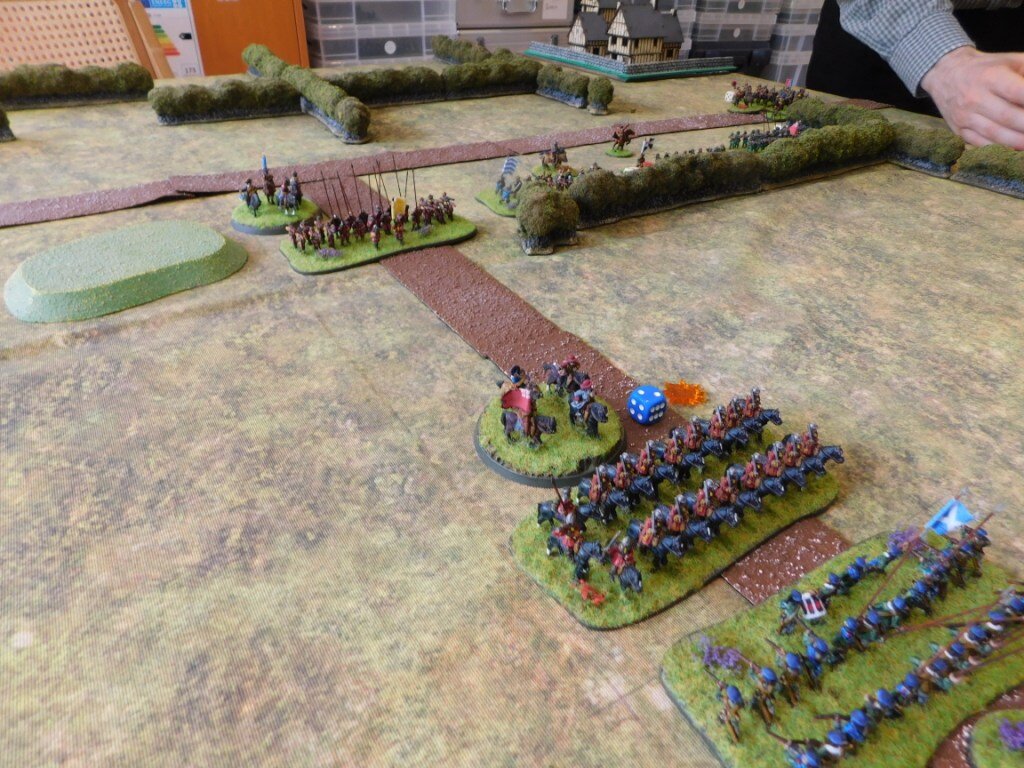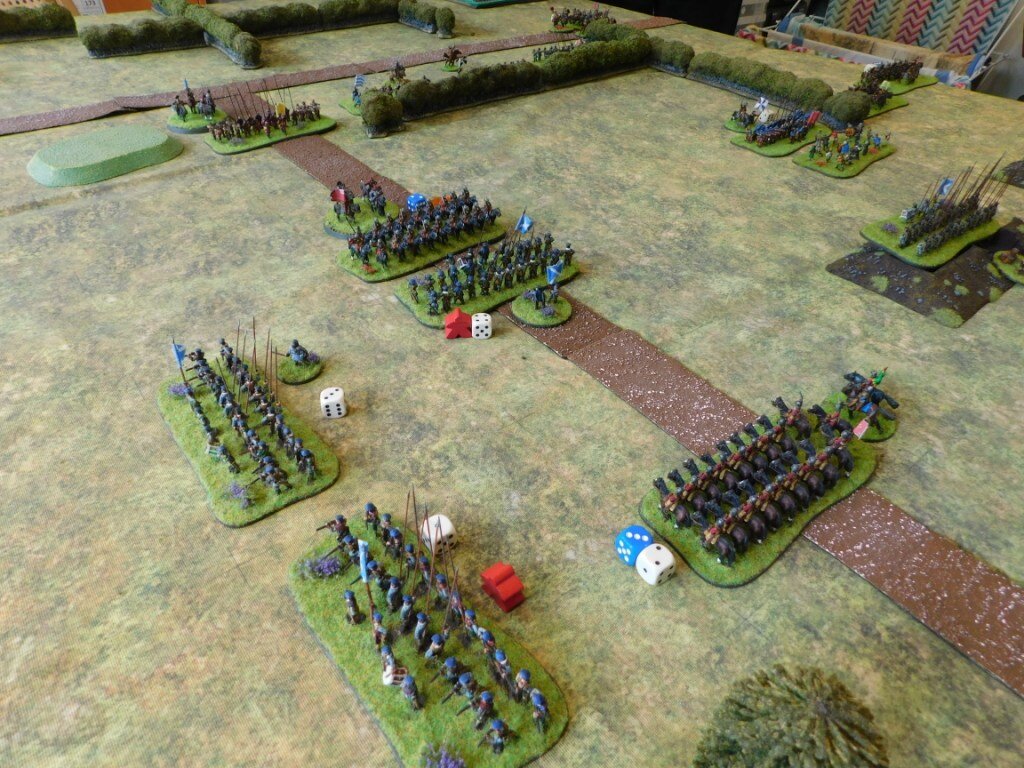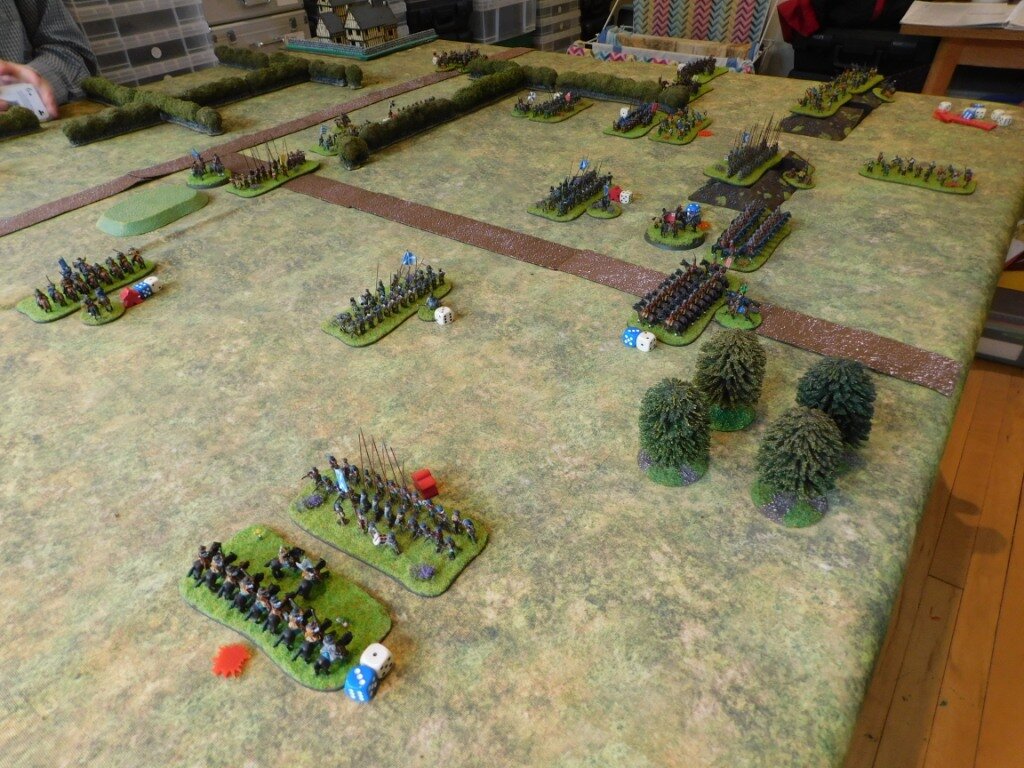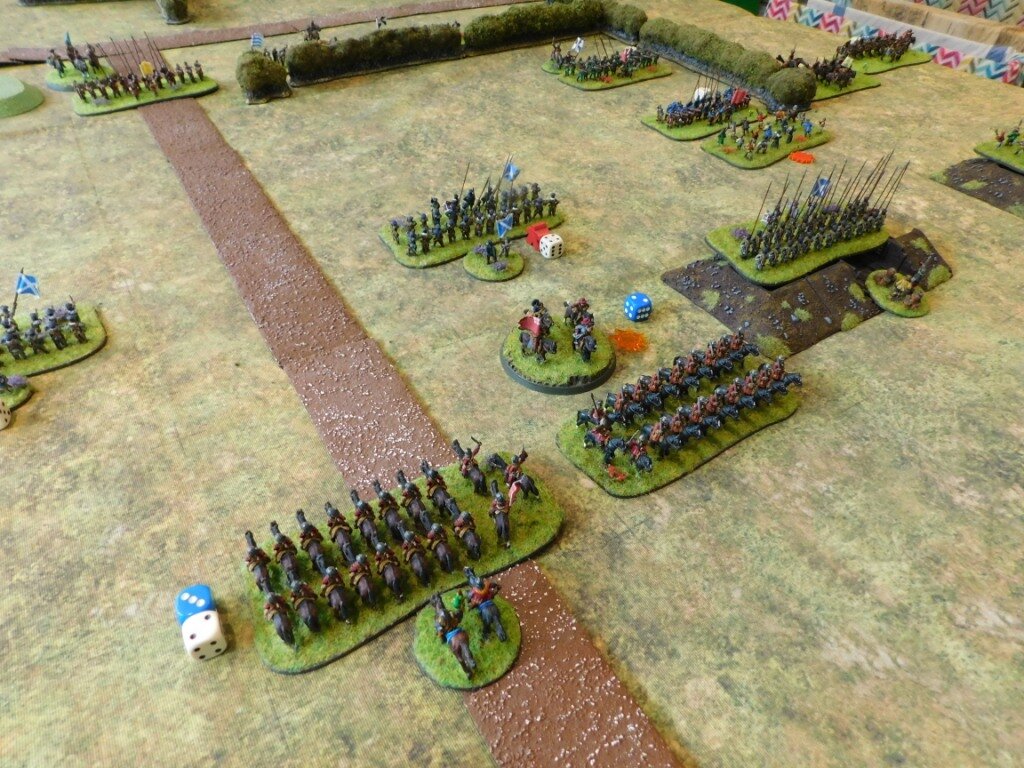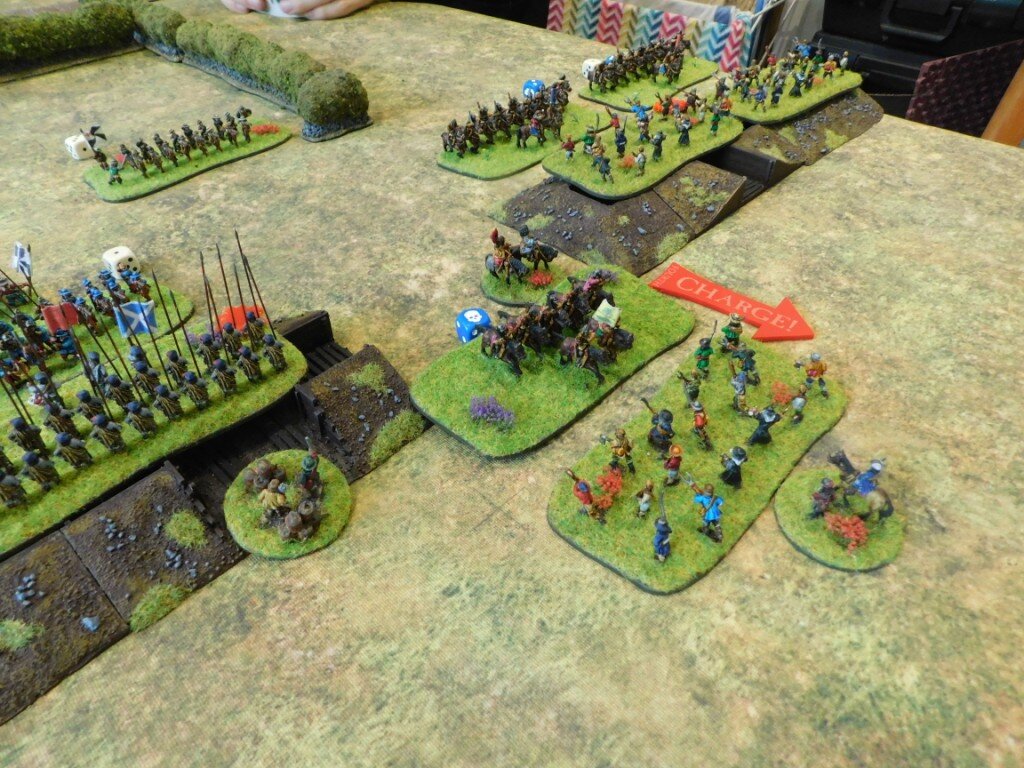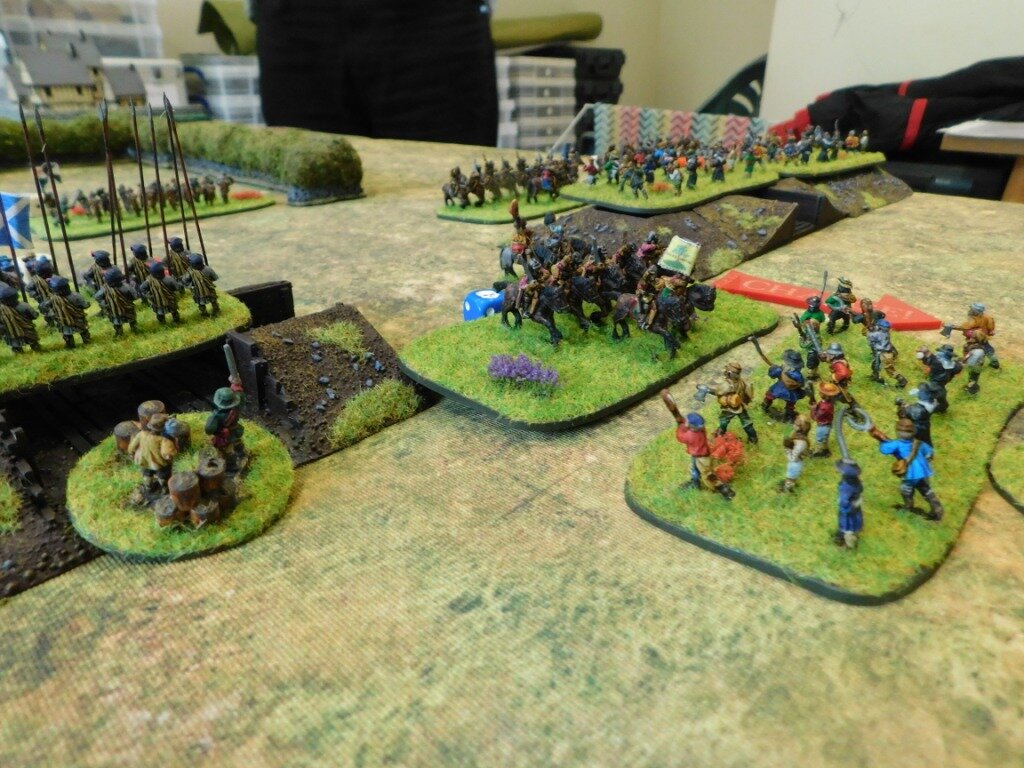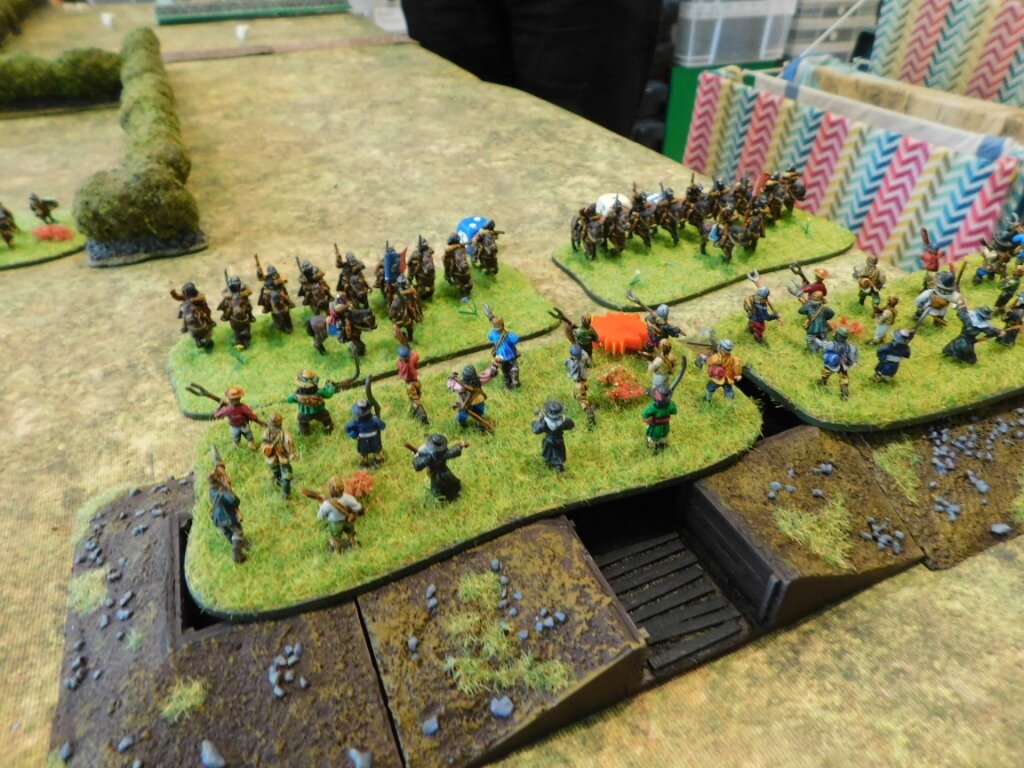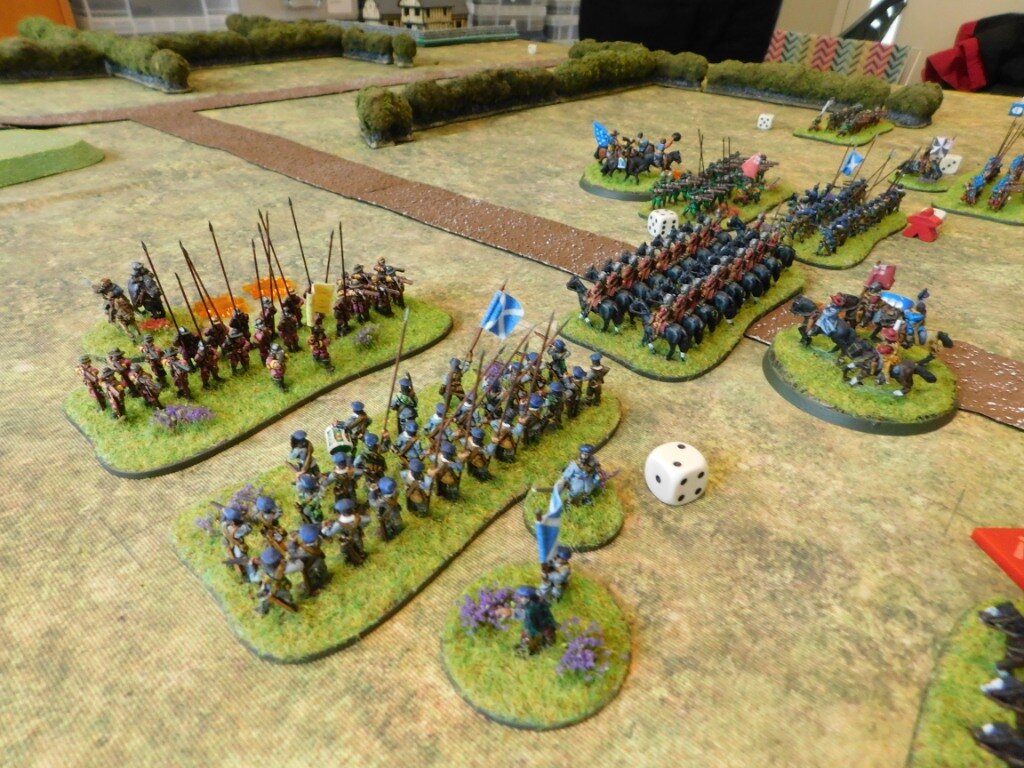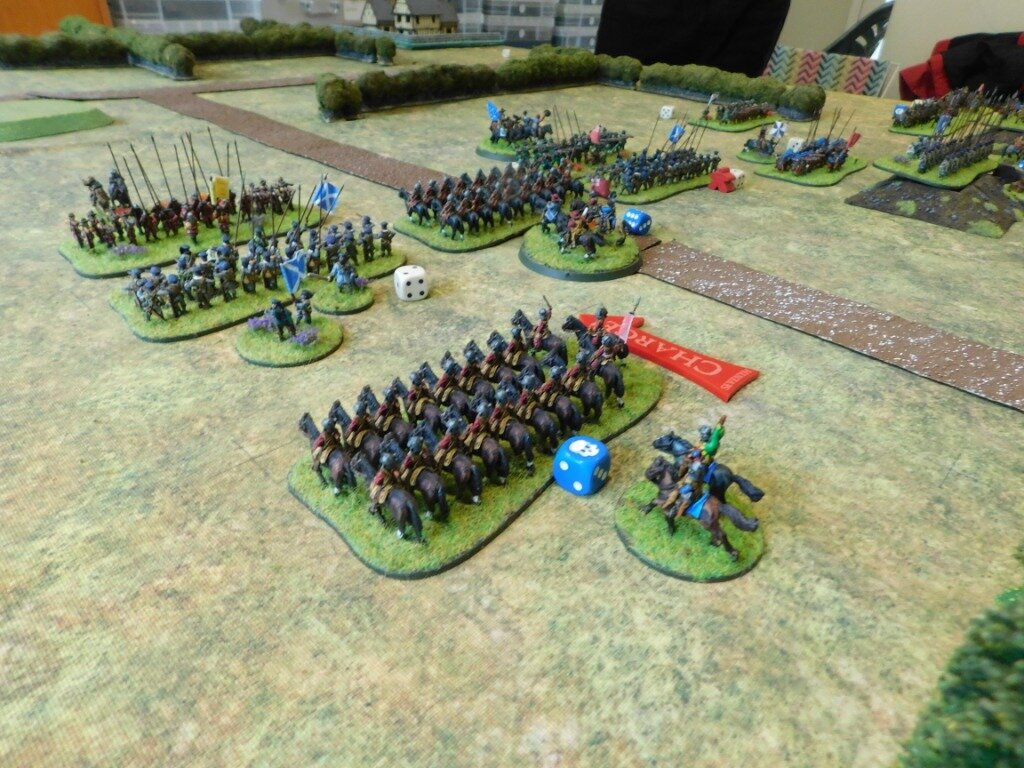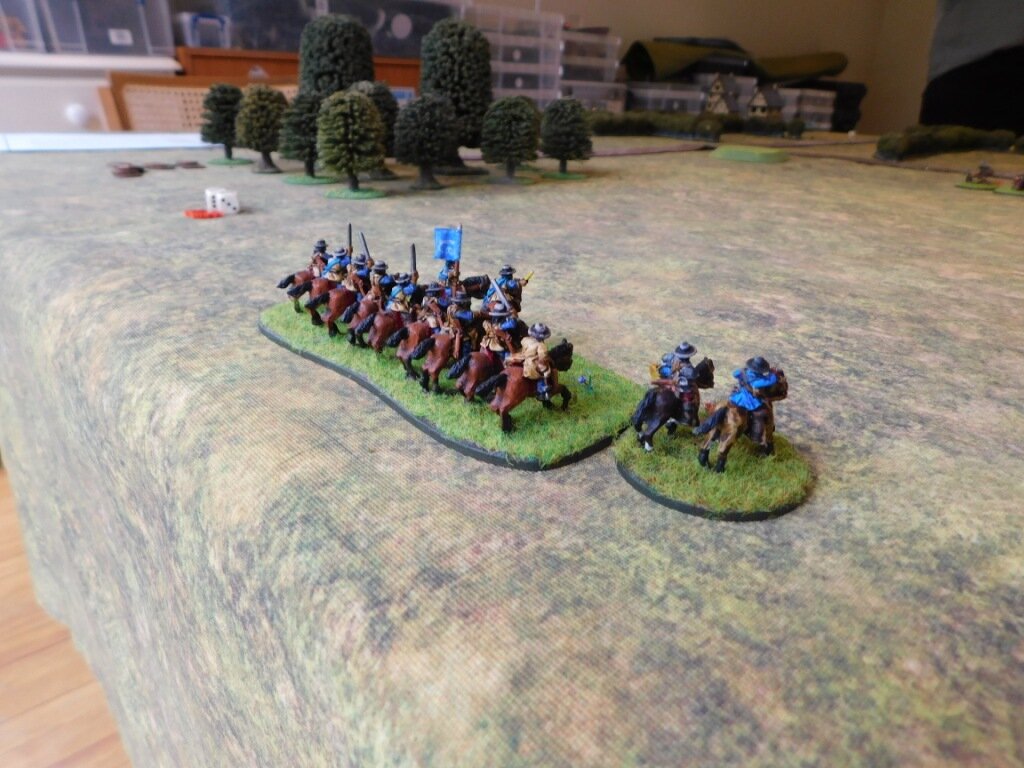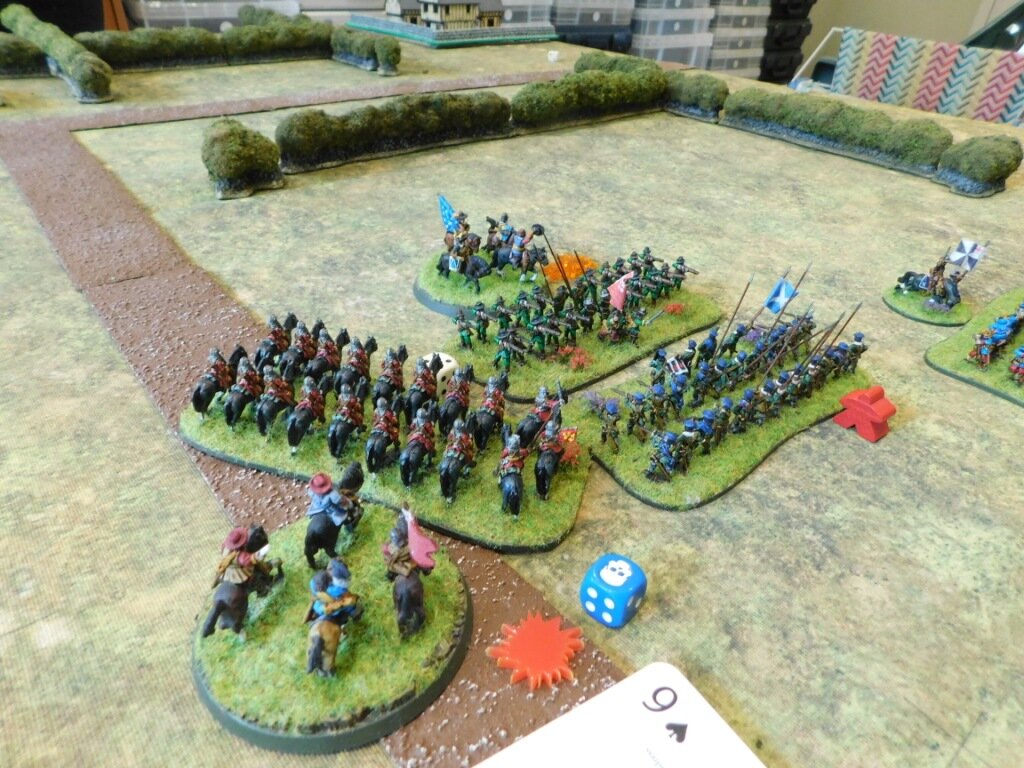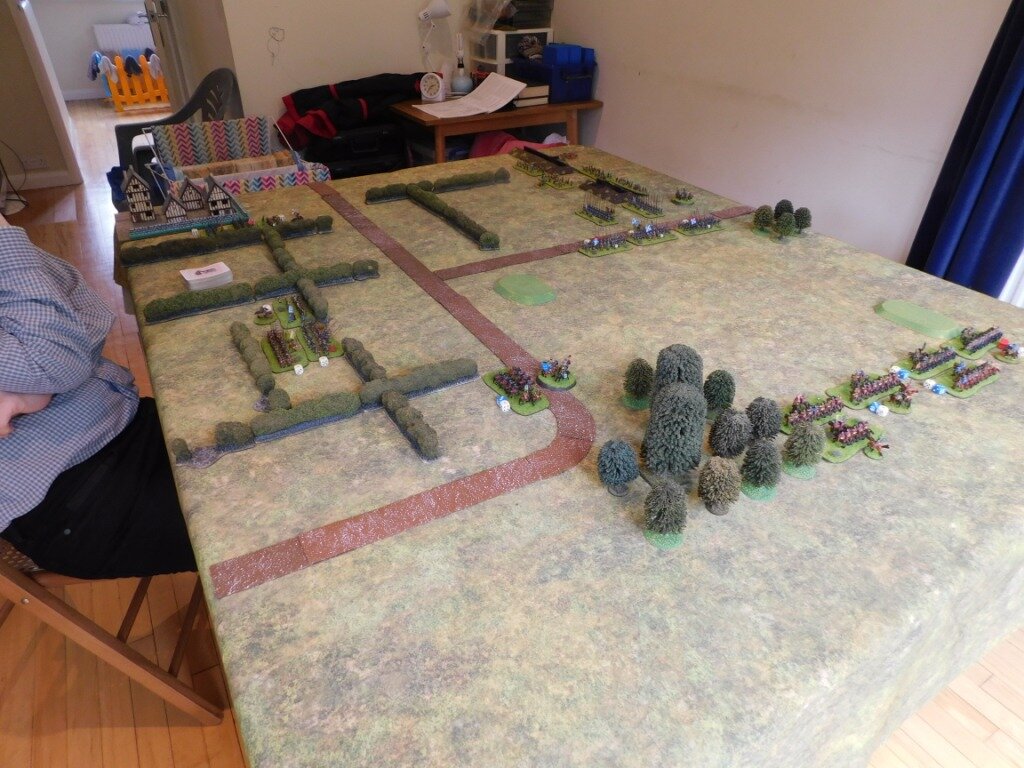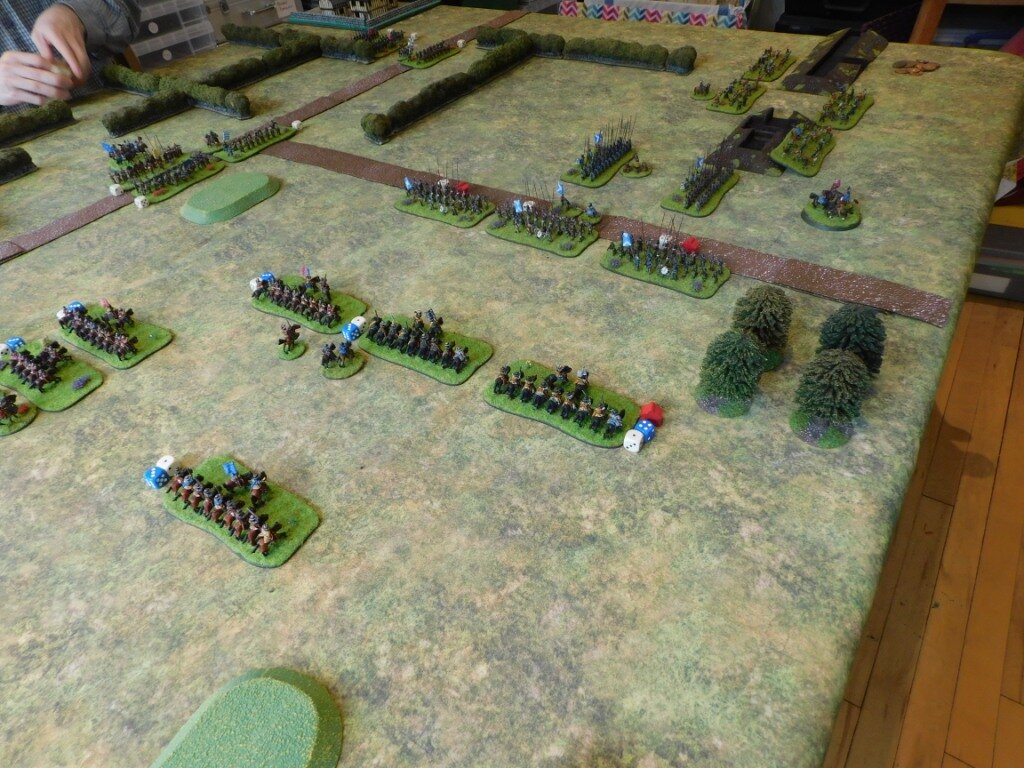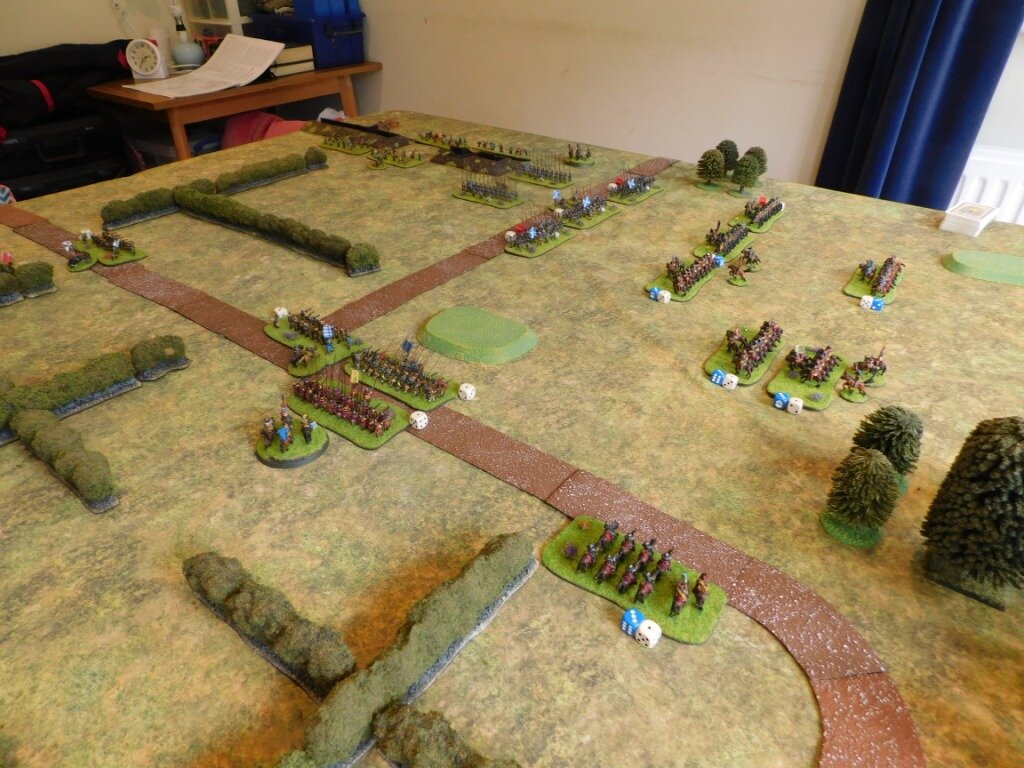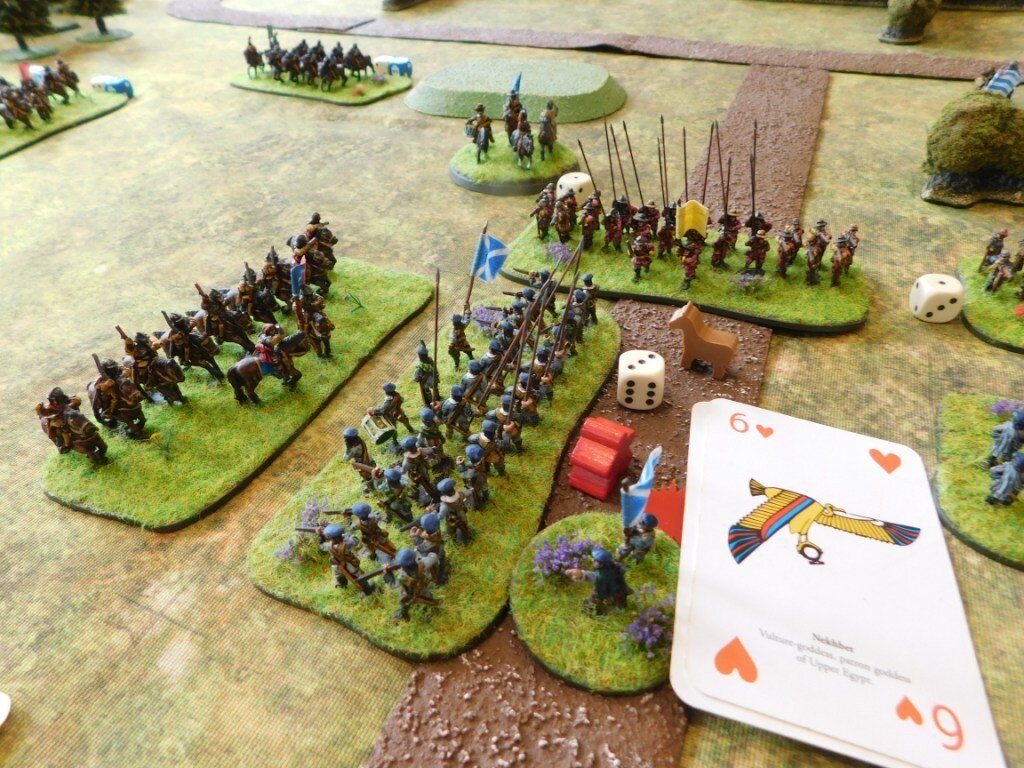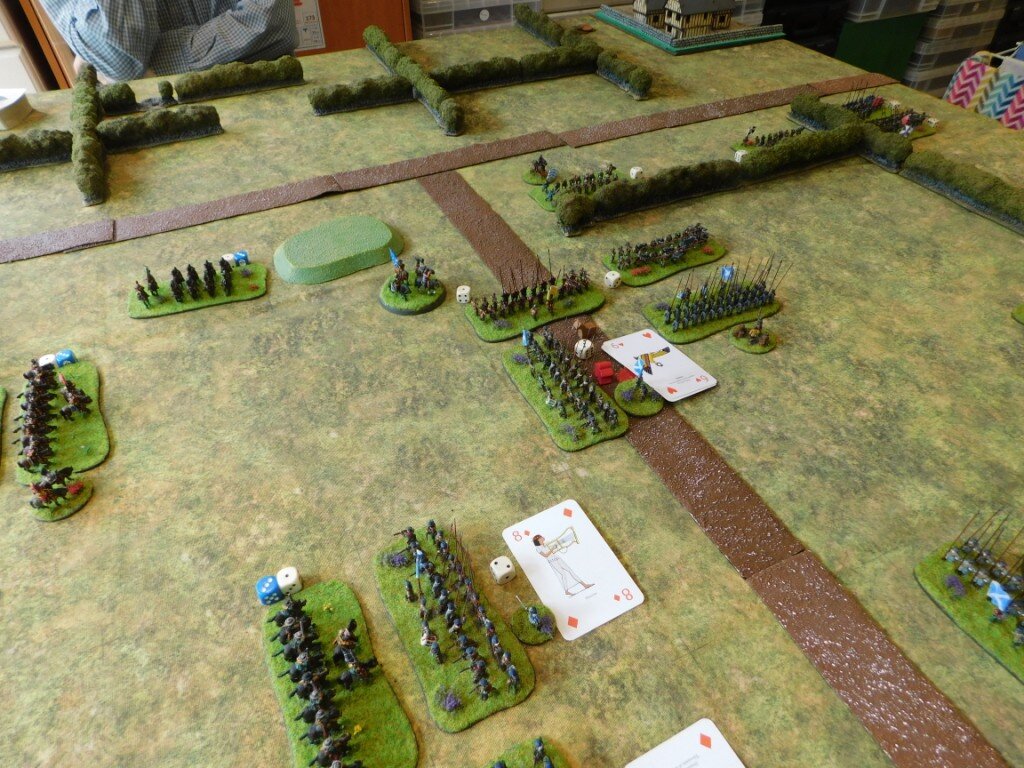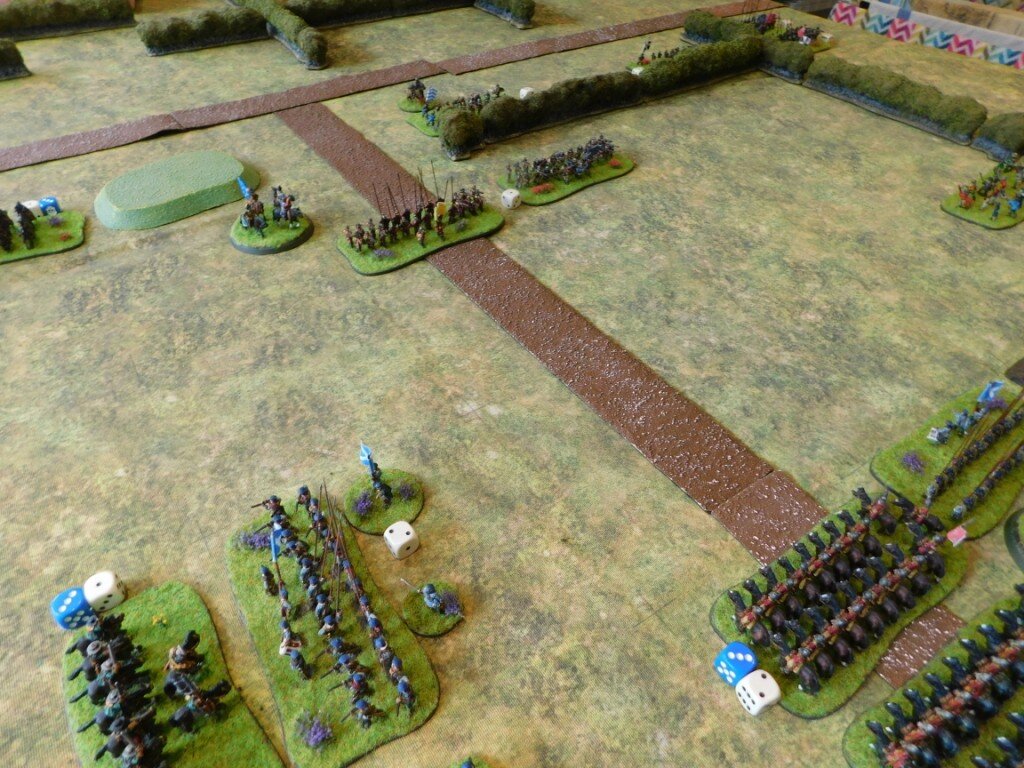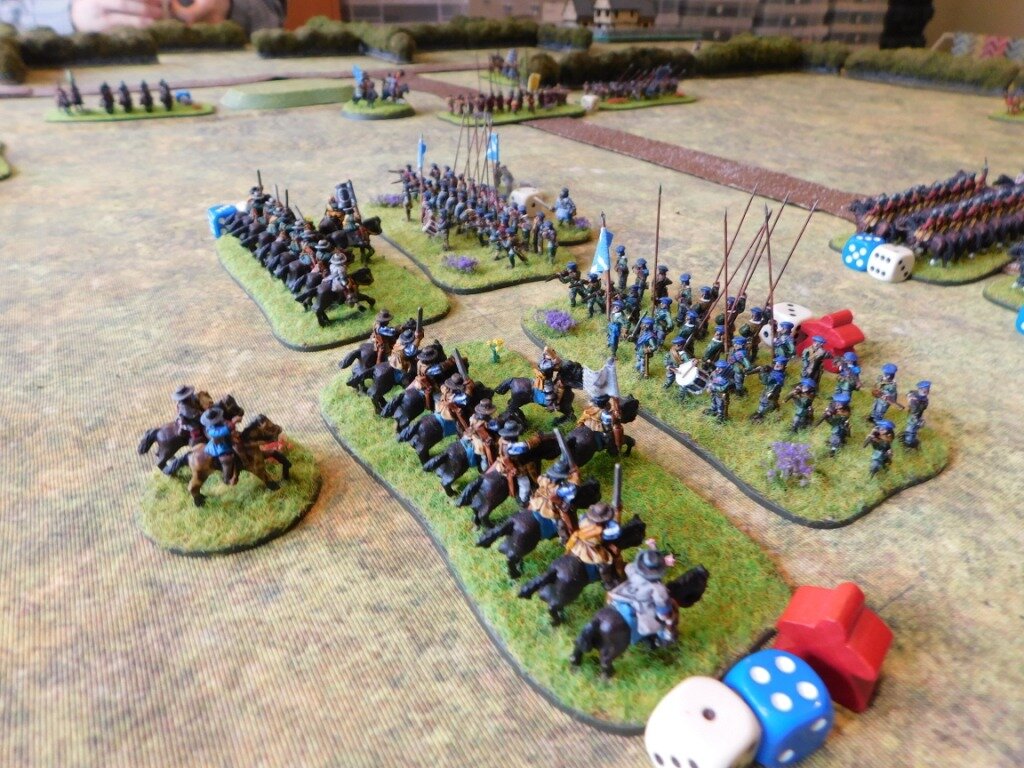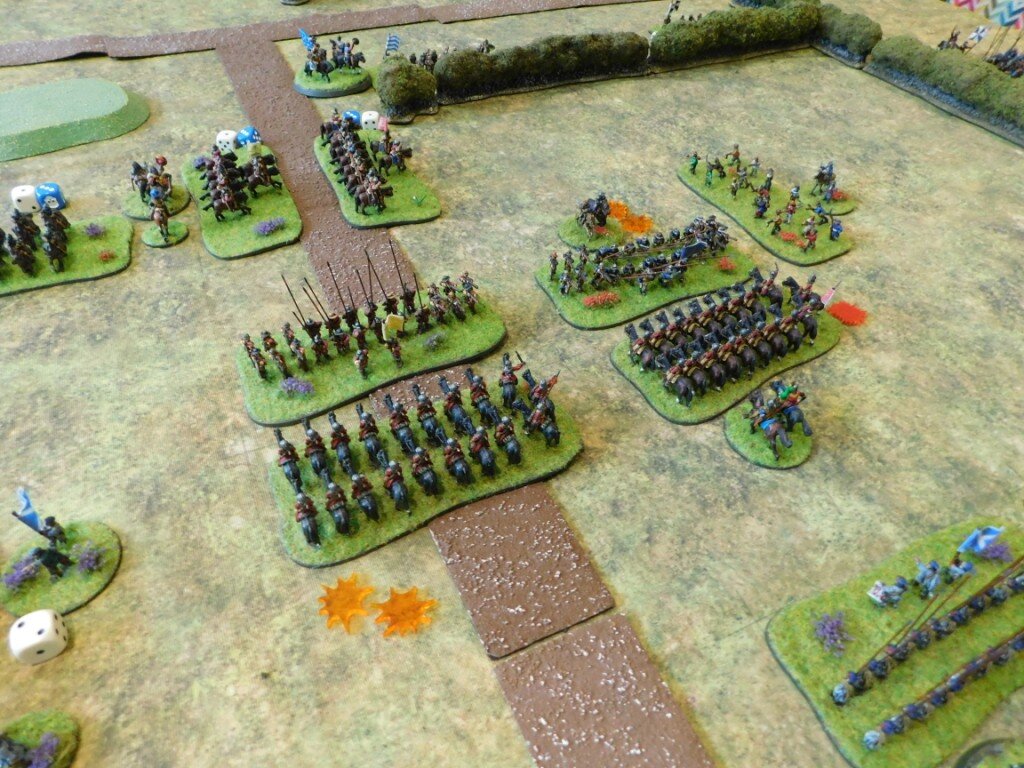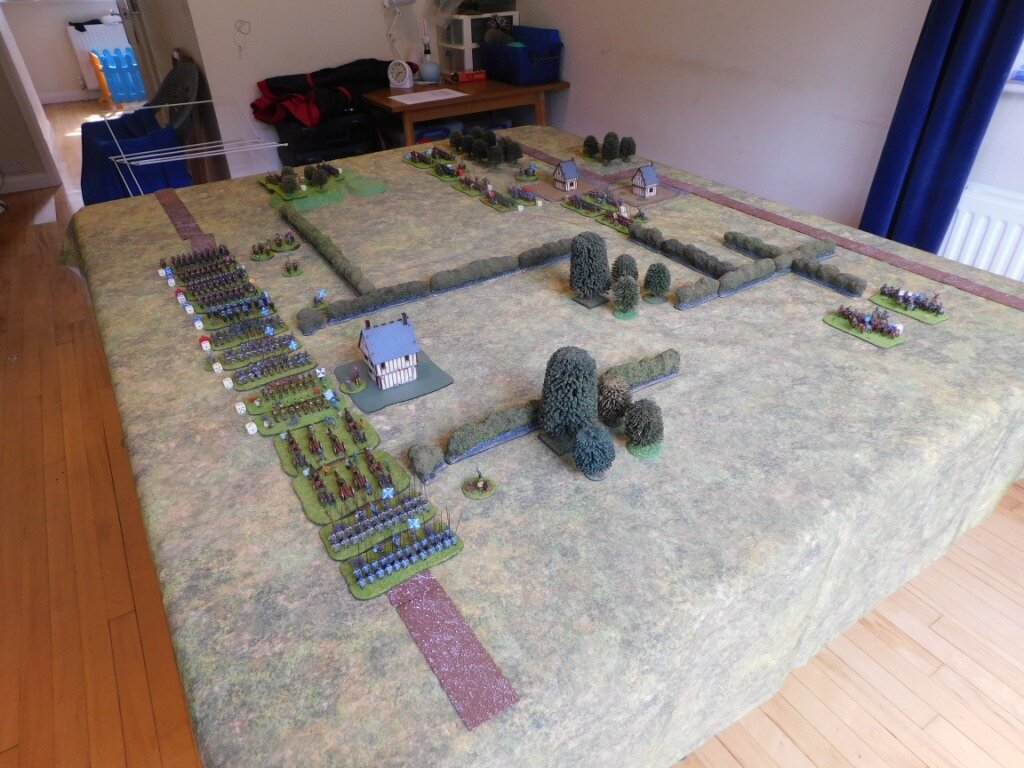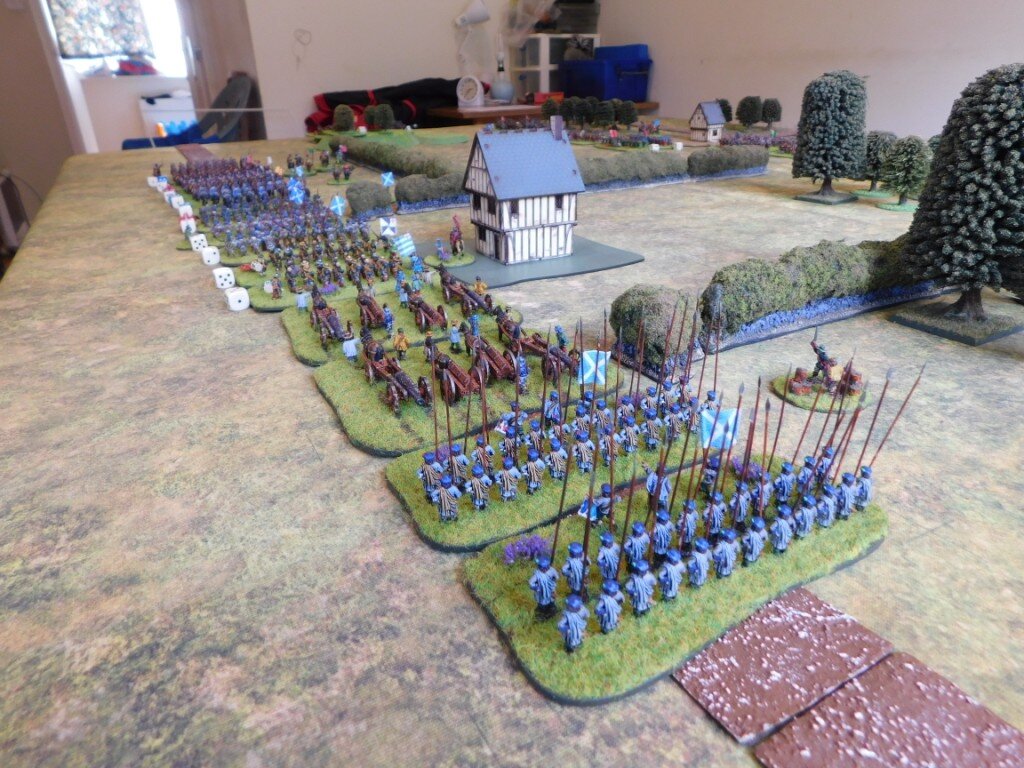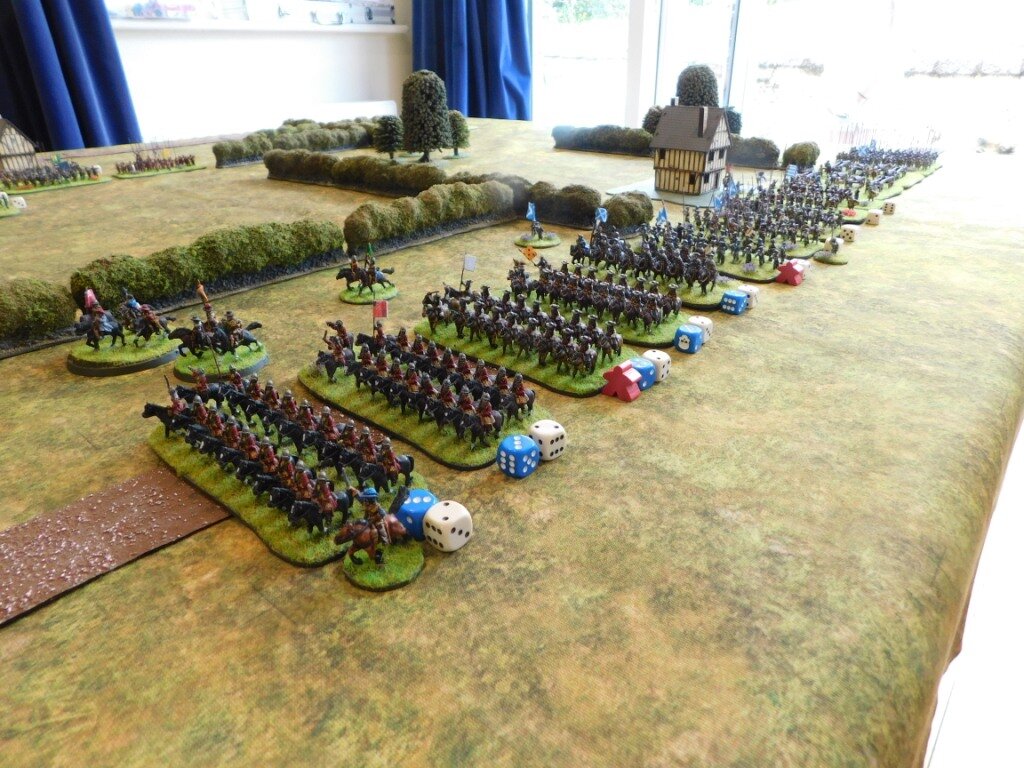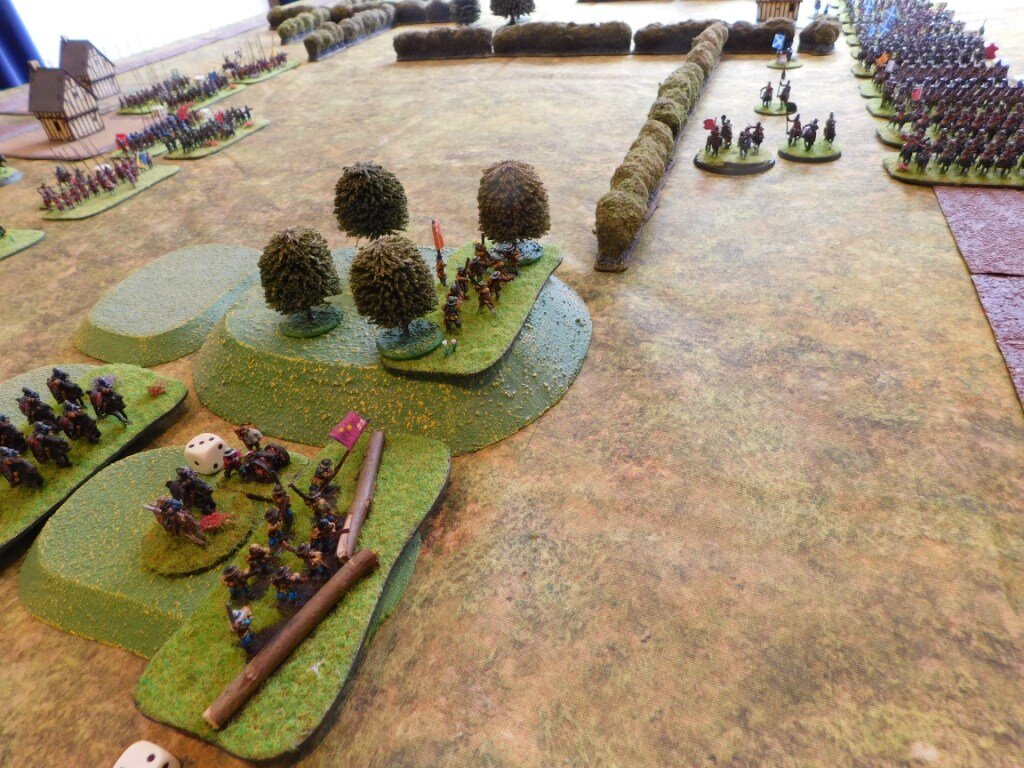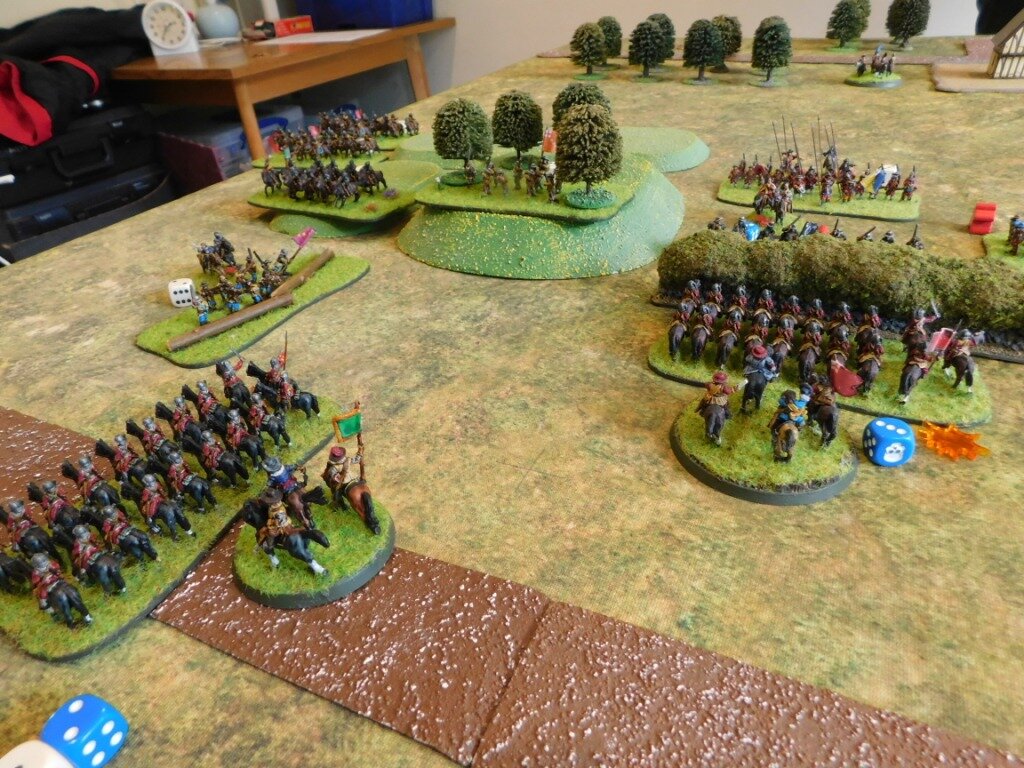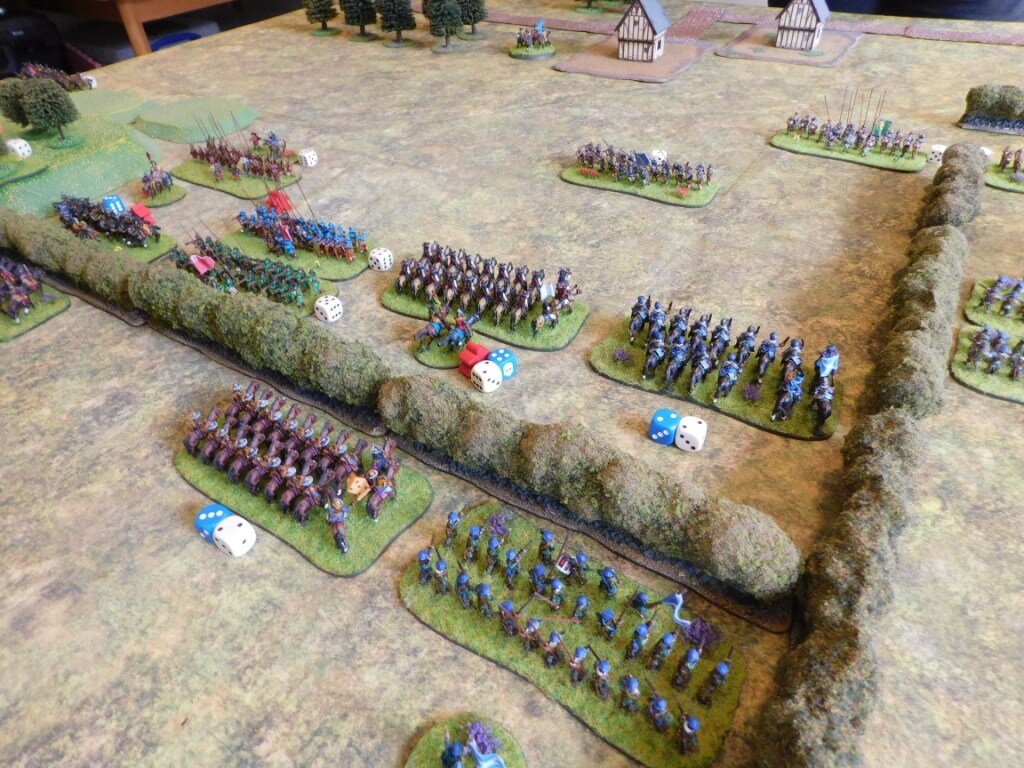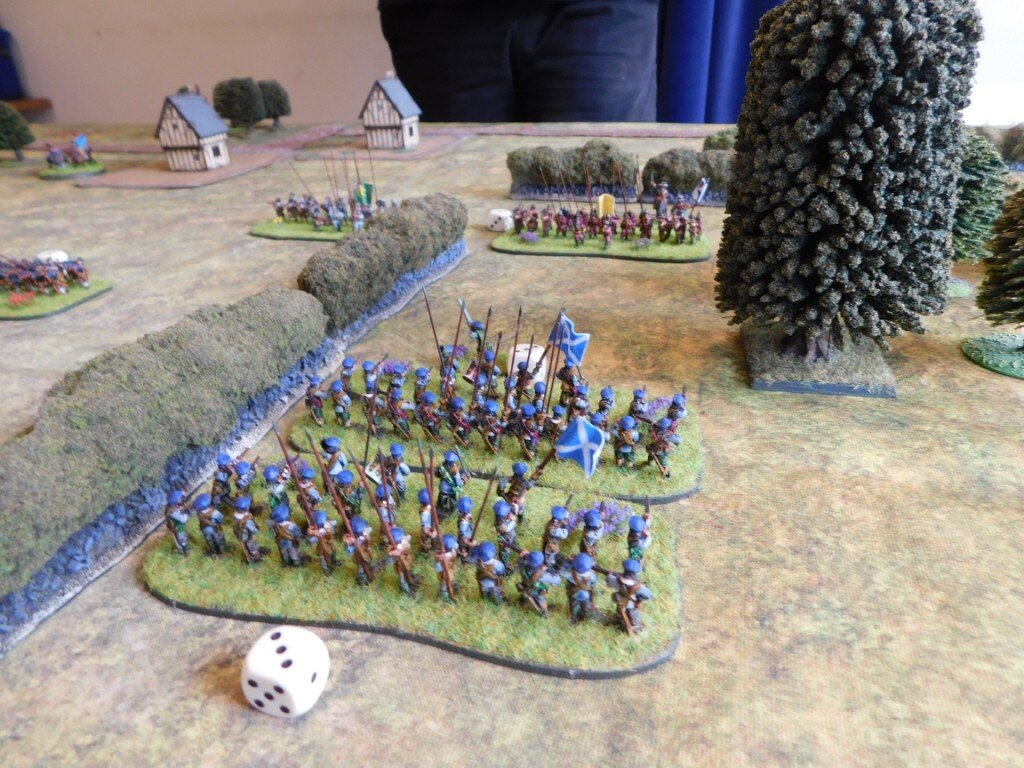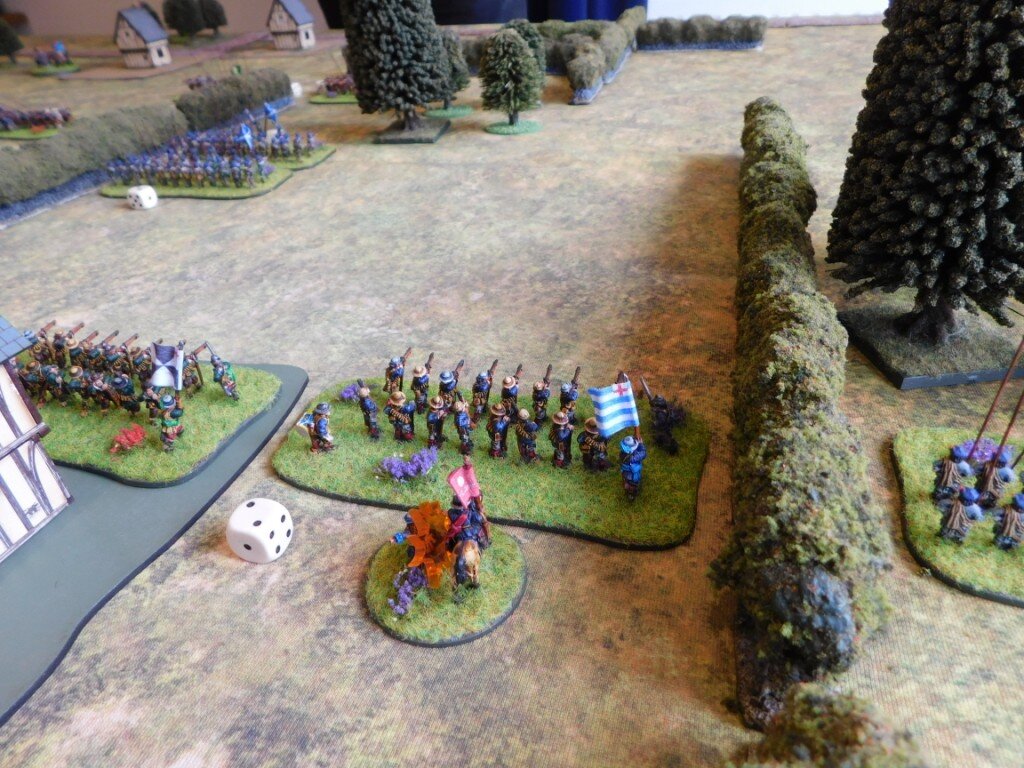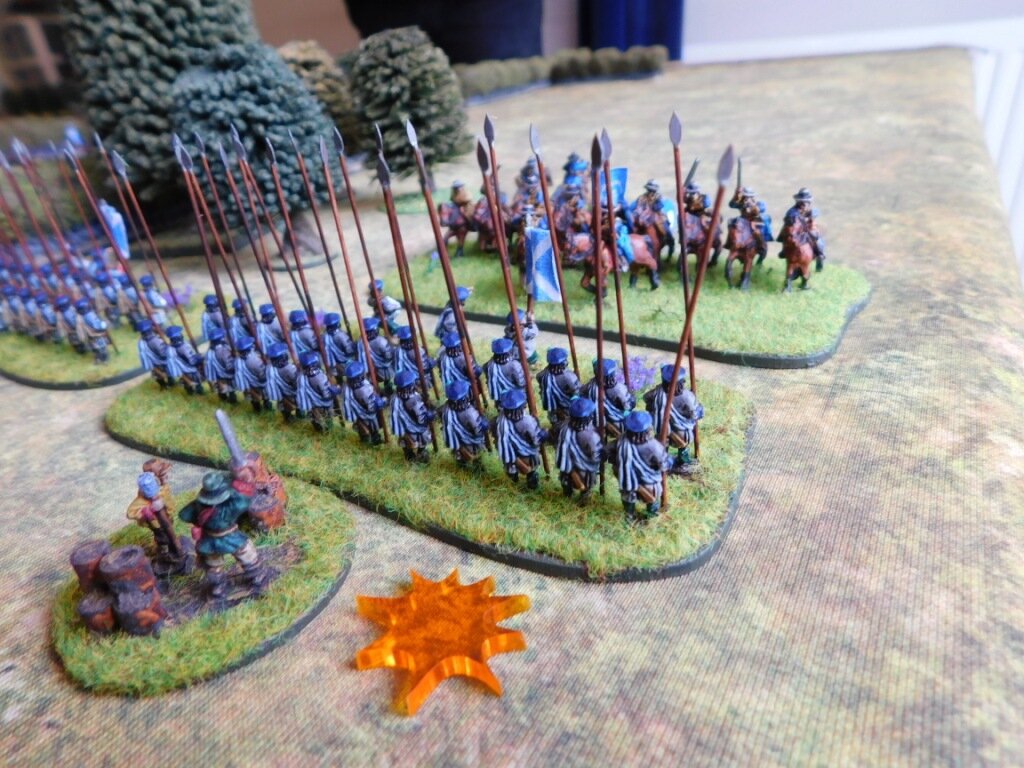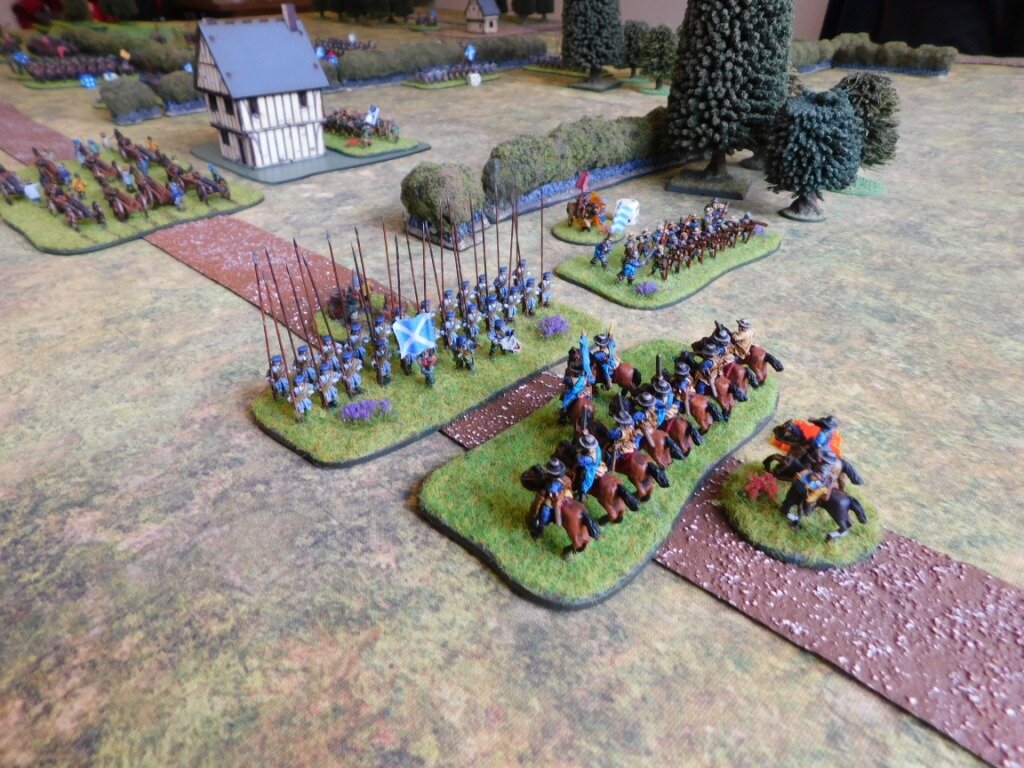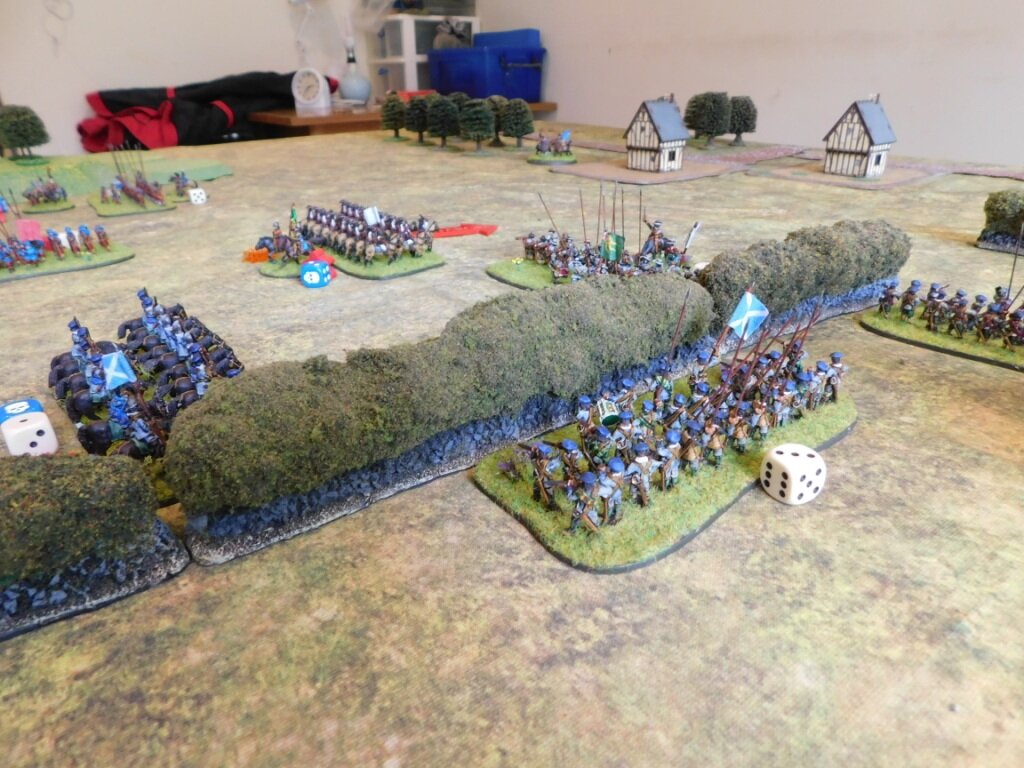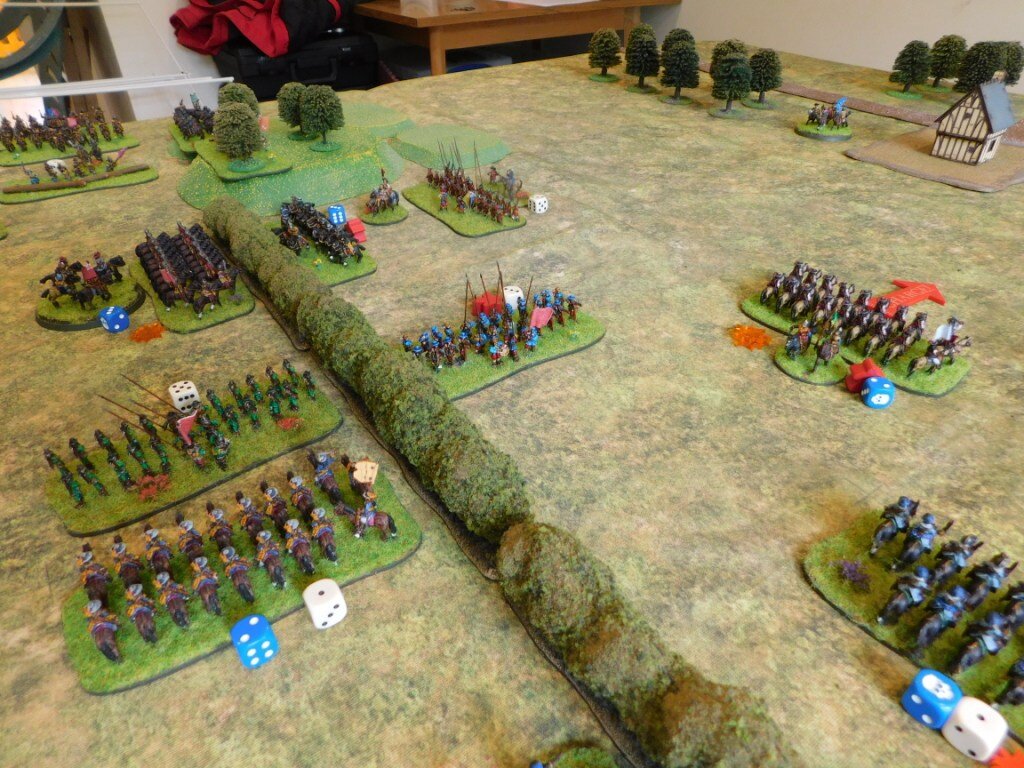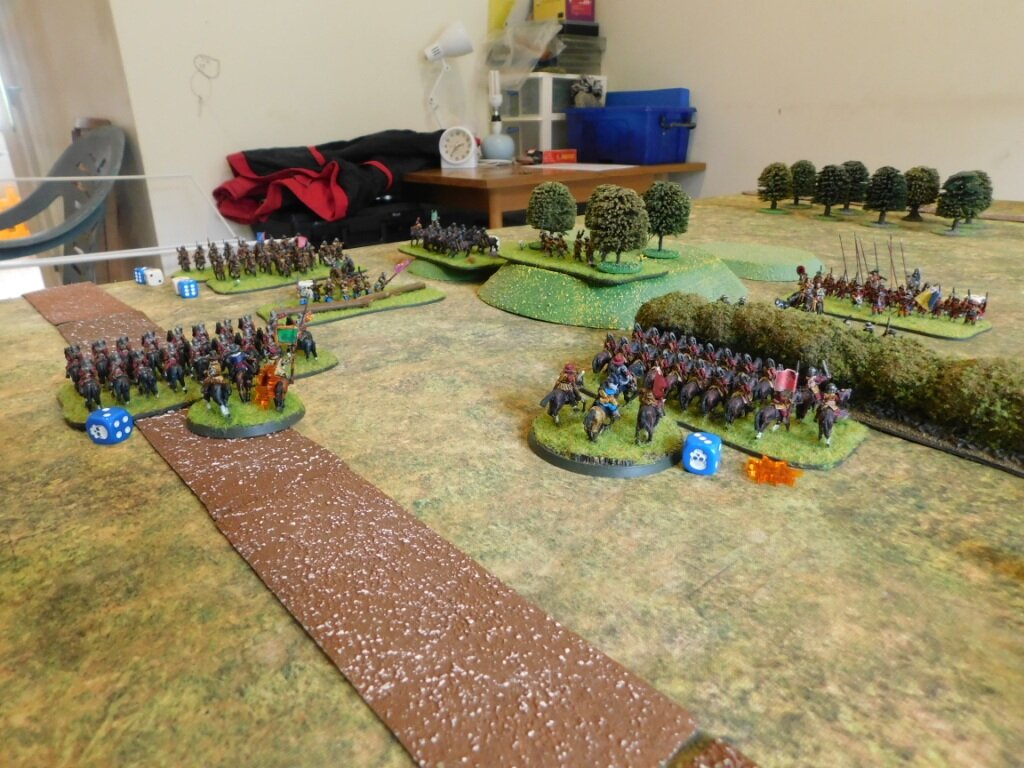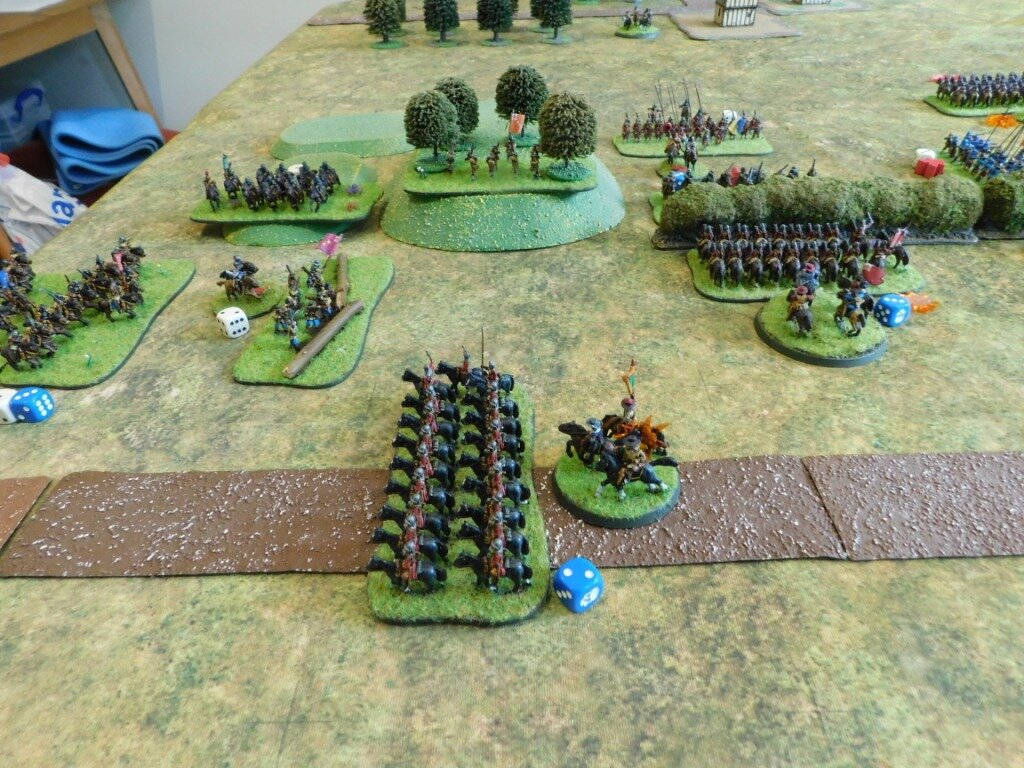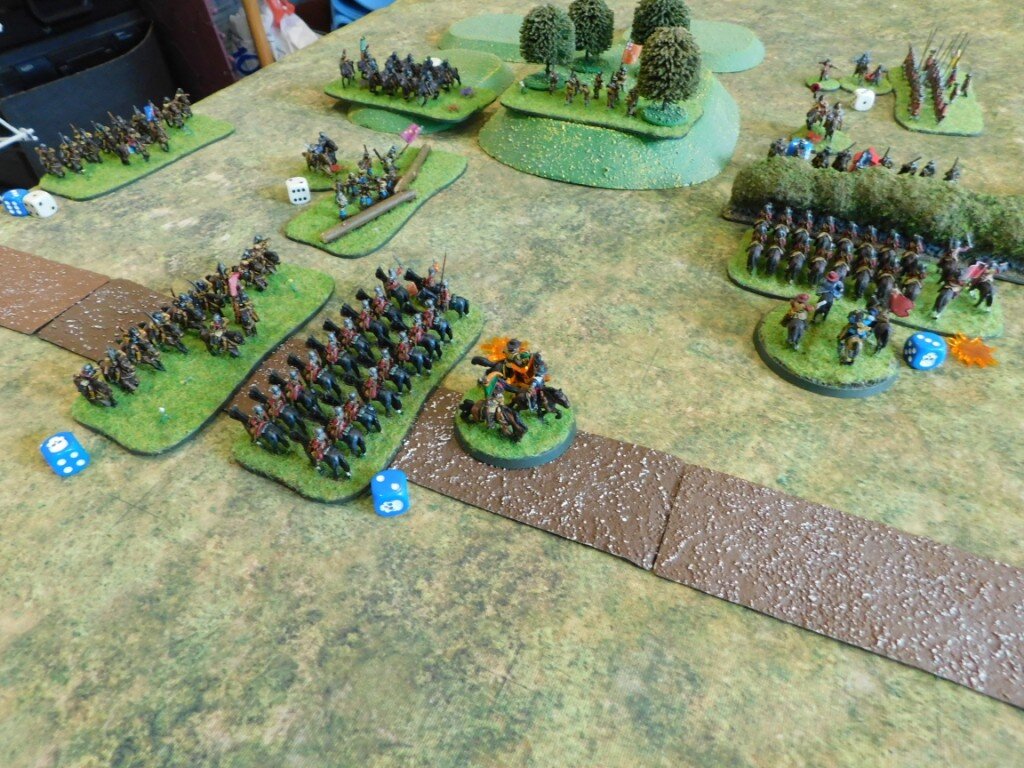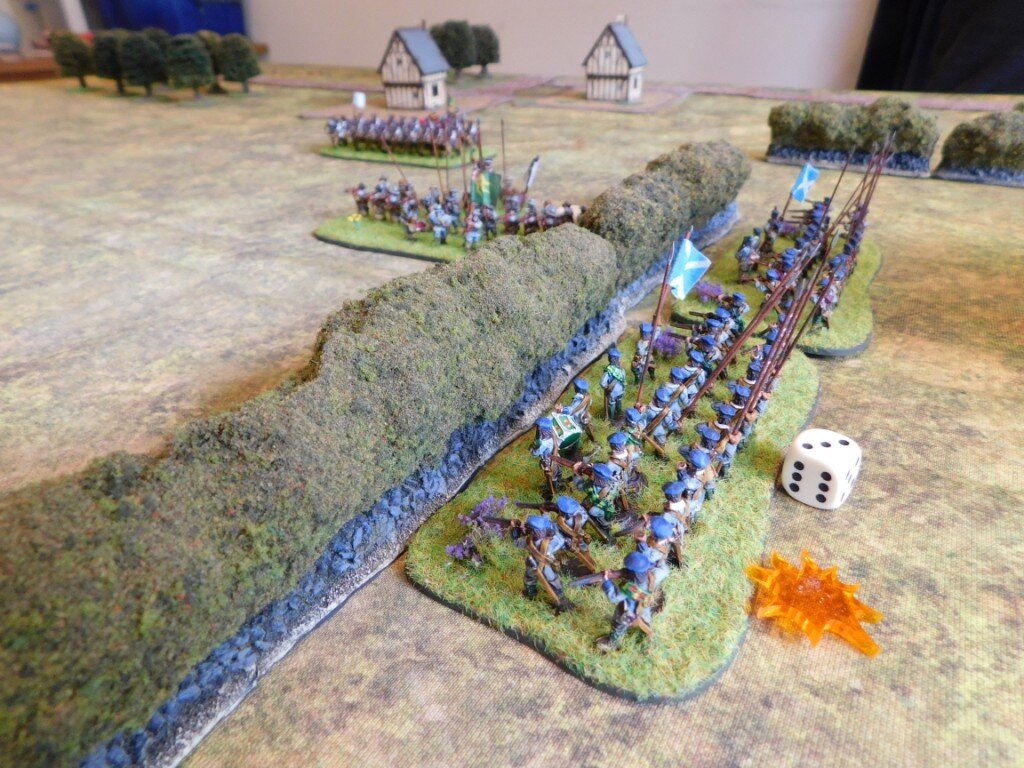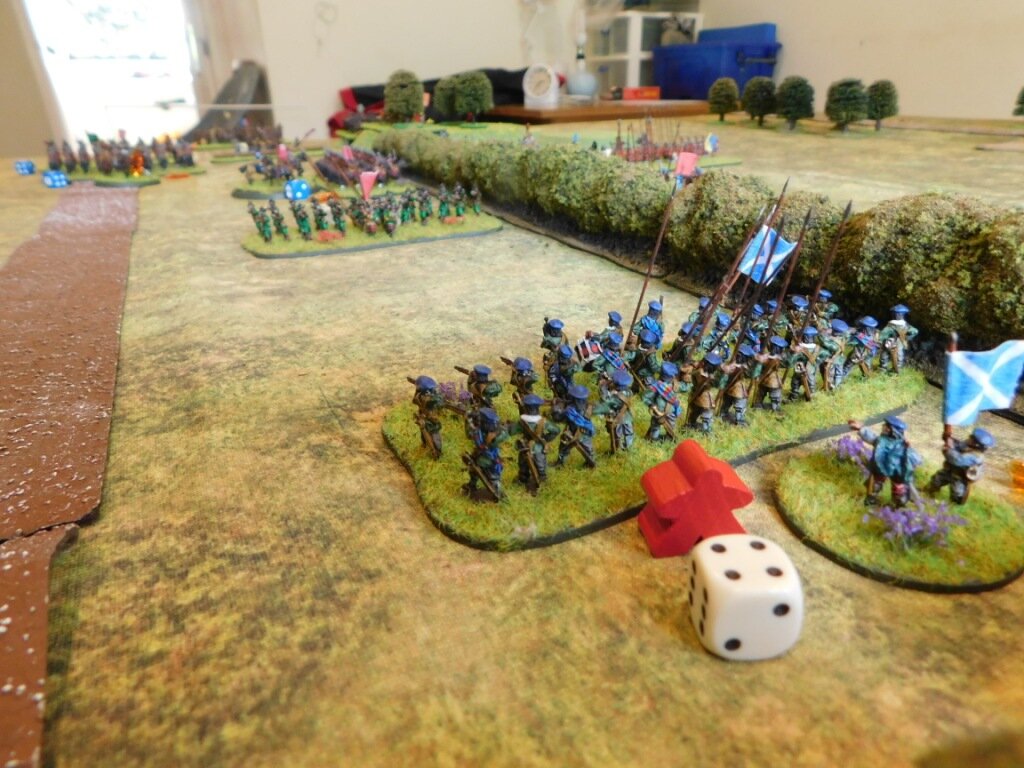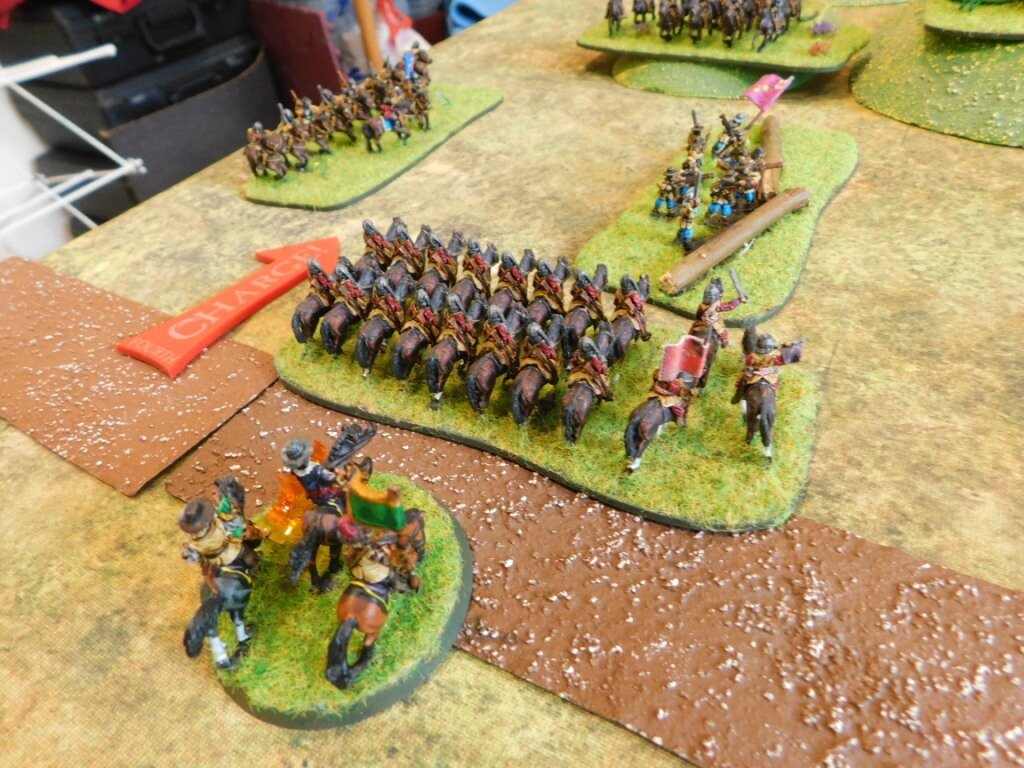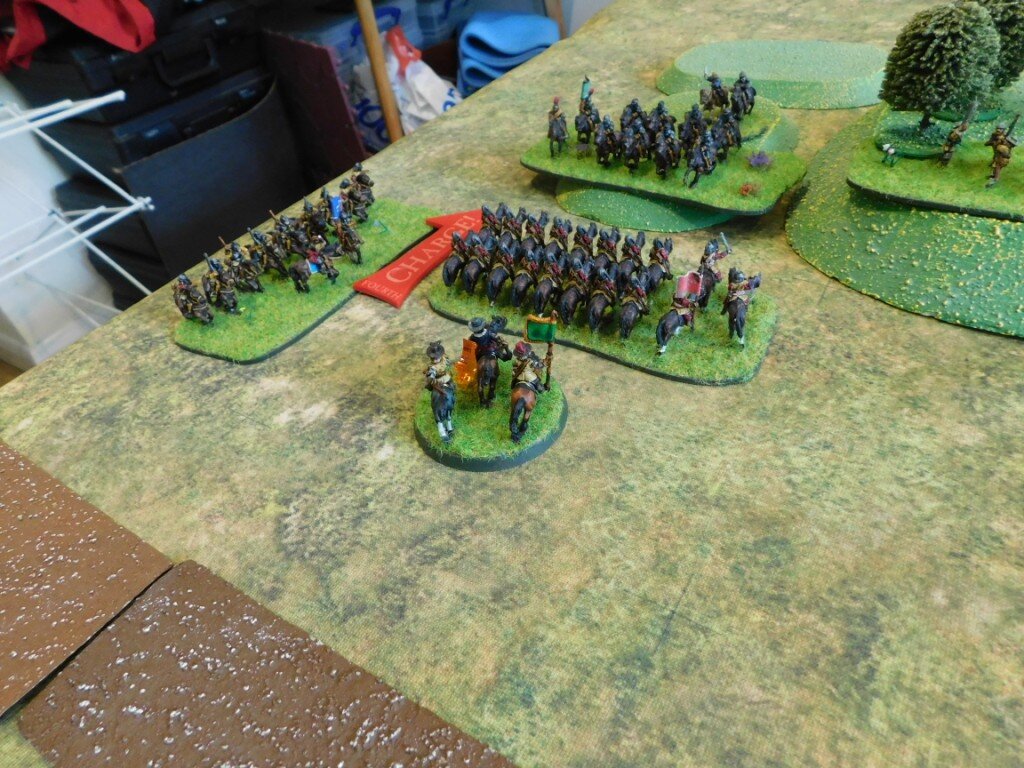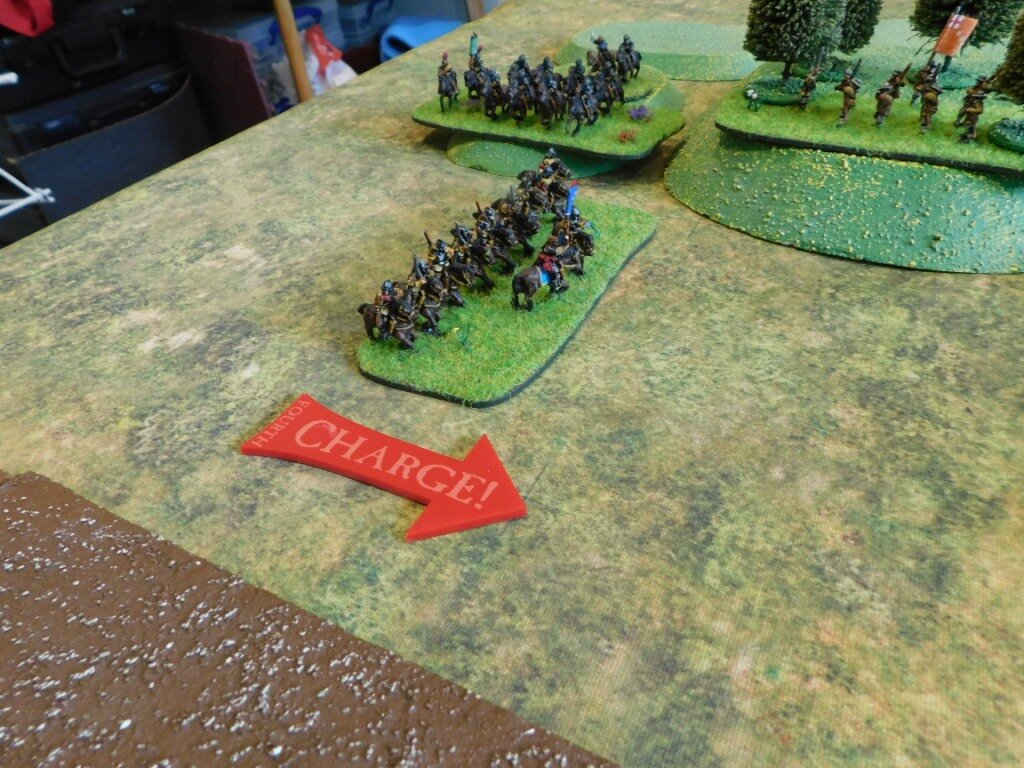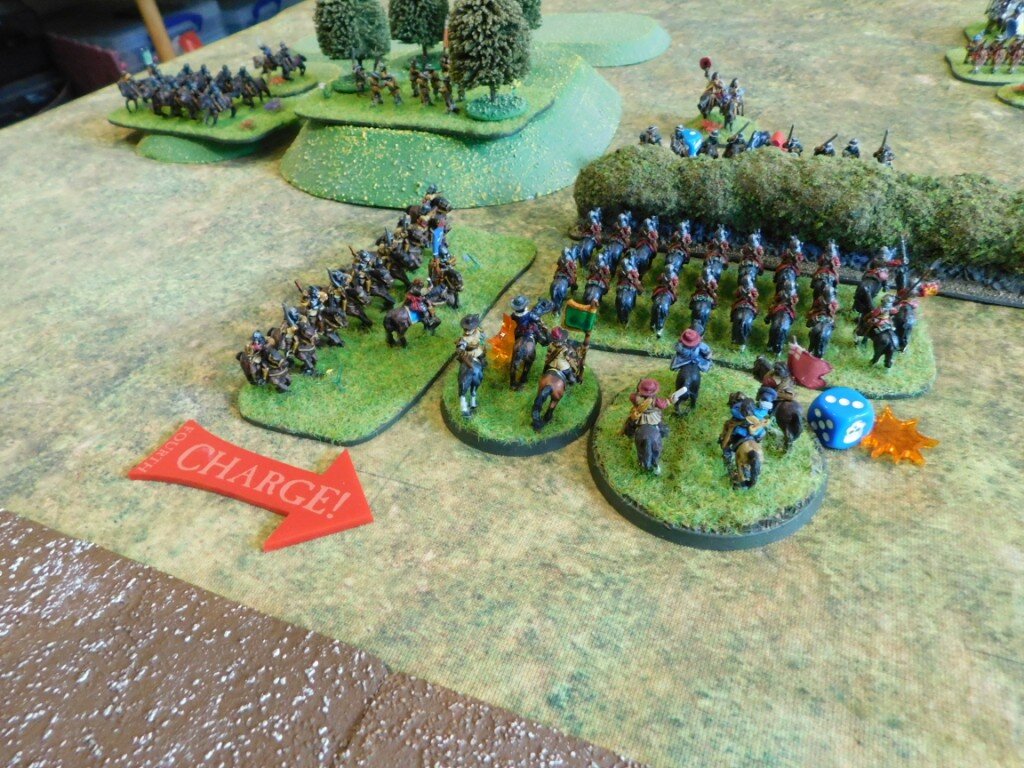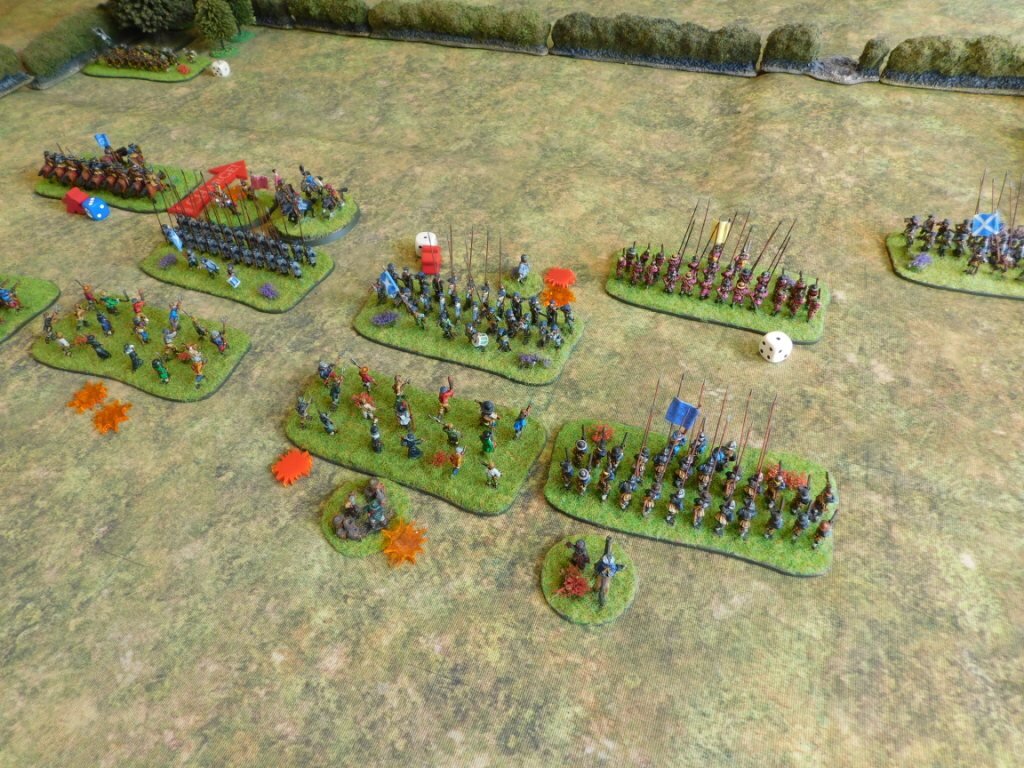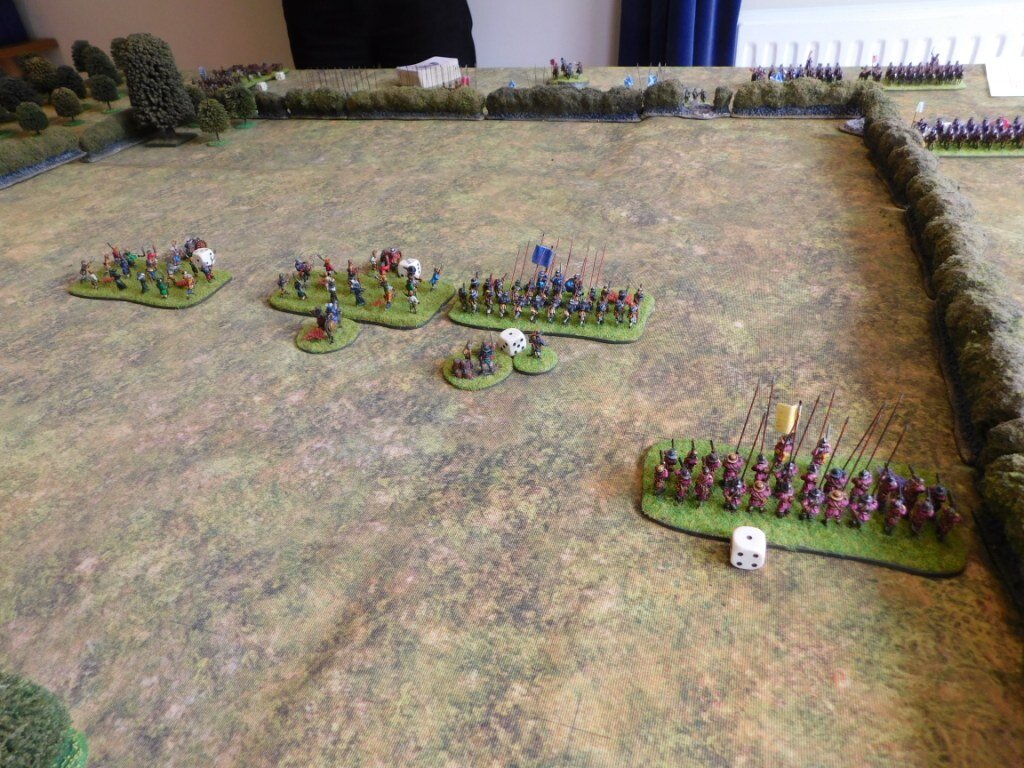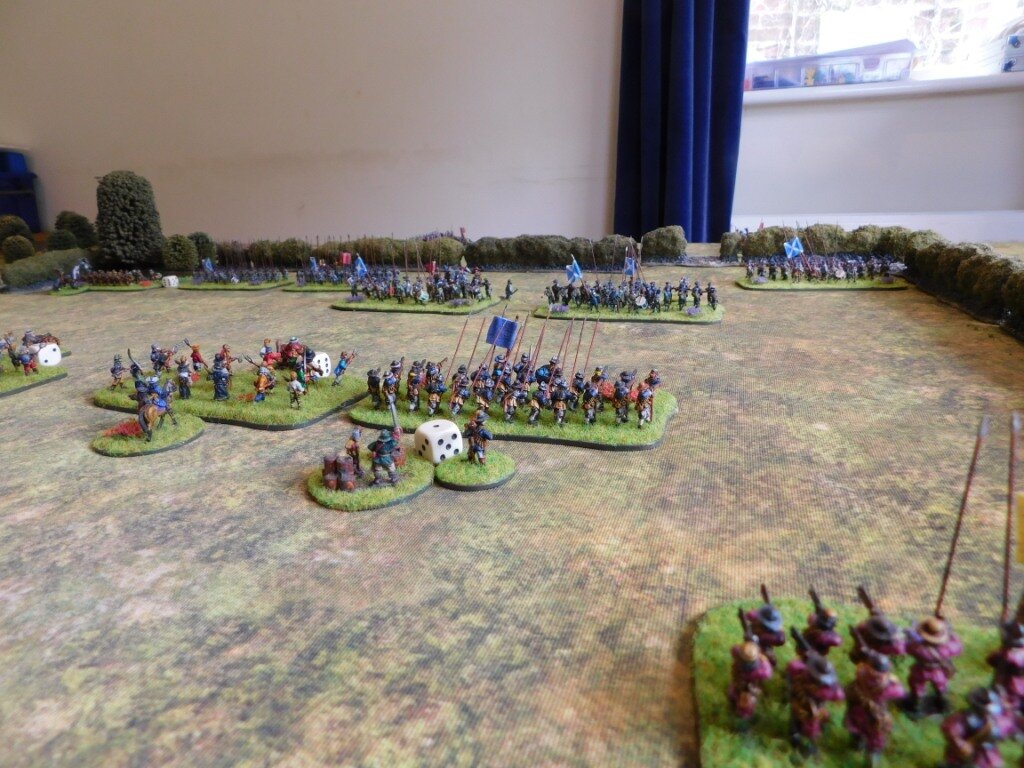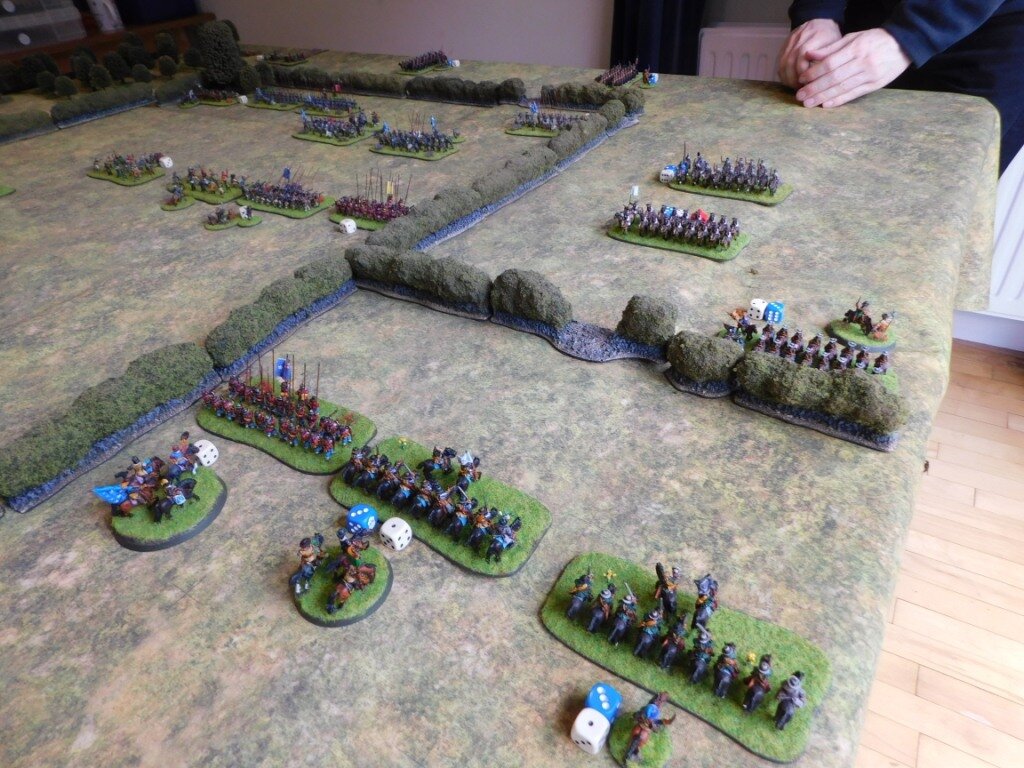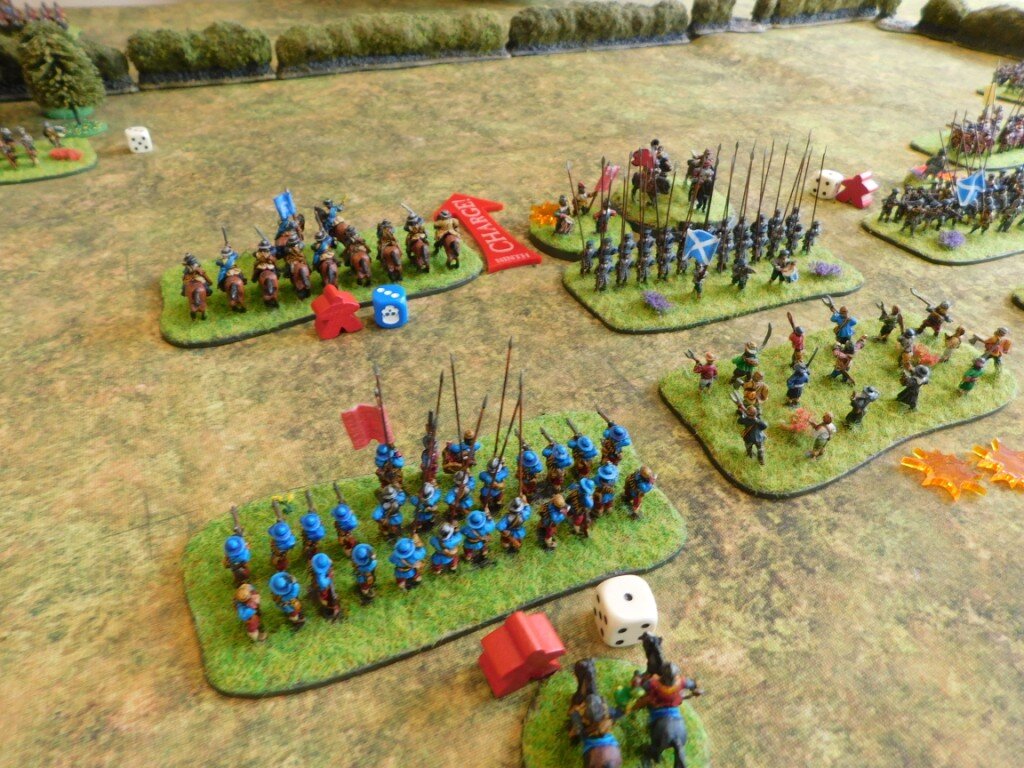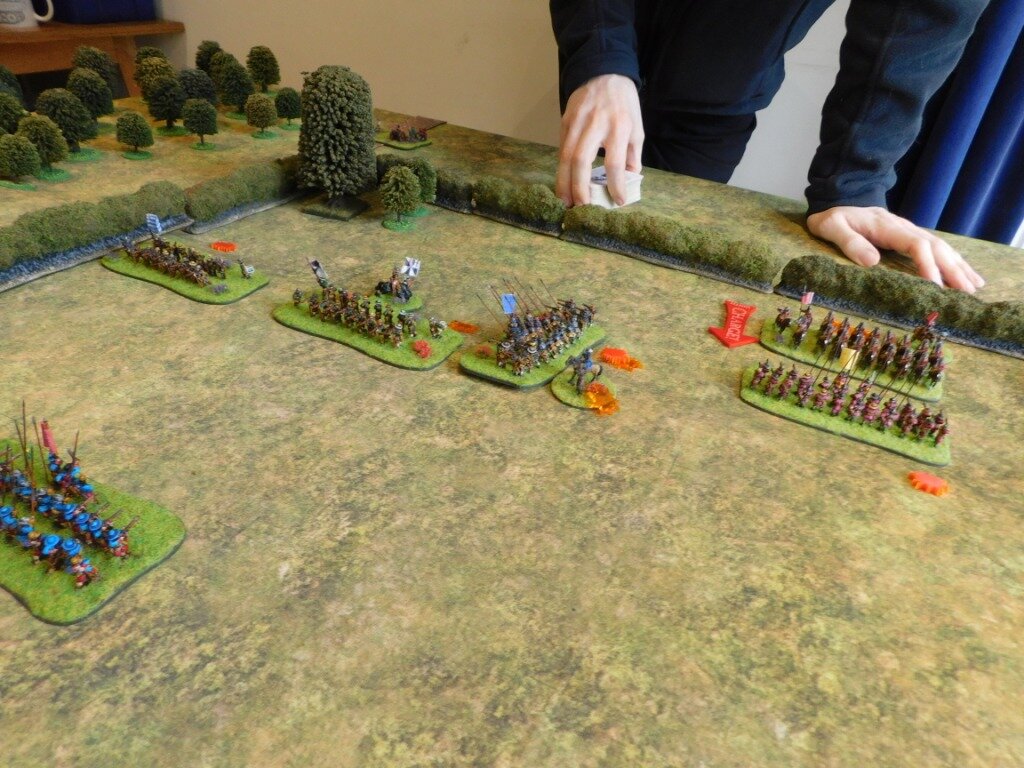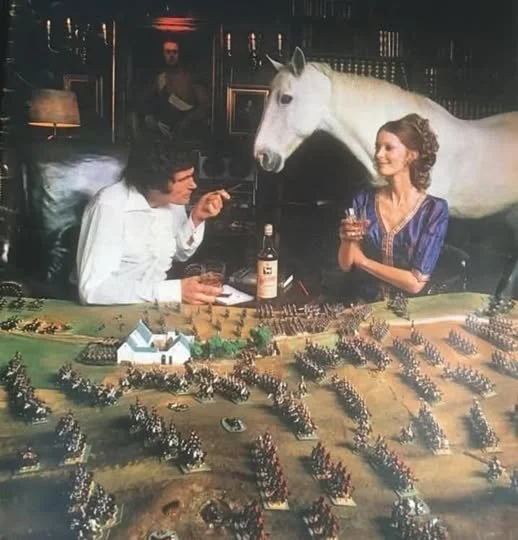FK&P AAR: Dick's Tower
/Back to For King & Parliament and the playtest of the next scenario in my forthcoming pack: Dick’s Tower.
Quick precis of the story so far: Royalists holed up in the city of Norchester besieged by the Roundheads. Parliamentarian guns have been pounding away at the city walls, focusing their efforts on a section of wall by the ruined building known locally as Dick’s Tower. A breach has been made, time for the attack to go in.
Dick’s Tower
The Royalists start the game in and around the tower: see pictures, below.
Defending the breach are two battalia of shot-heavy infantry, with a couple of commanded shot battalia coming up to reinforce them. On their left, outside the walls, is a brigade of infantry supported by some guns. The CinC’s bodyguard cuirassiers, the Norchester Disenfranchised, along with General Sir Edmund Dexter are there too. Lurking on the right are a couple of squadrons of horse, just waiting for the opportunity to sneak-attack the Roundhead attackers.
The Parliamentarian attackers (see picture, above) consisted of ten battalia of infantry supported by a large squadron of Dutch-style horse, the Perform-Thy-Vows Puritan horse.
Opening Moves
As the sun rose, the Parliamentarian line moved smartly towards the small stream surrounding the tower. The Royalist supporting force moved up parallel to the walls, whilst the Staplehurst Horse on the right trotted forward looking for the Roundhead flank.
The Parliamentarians crossed the stream without pausing and threw themselves at the breach. Their troops on their right hung back slightly, looking to fight one battle at a time.
Staplehurst was still leading his horse forward and, as one Roundhead battalion (Manning’s Foot, in blue) was smashed from the field by fire from the shot-heavies, charged the far left of the Roundhead line.
Engaged from the front and flank, the Parliamentarian battalia there (Kelsey’s Foot, in grey) crumbled and fled. It would have been great if the Royalist horse had charged on to hit the next enemy battalia in the flank as well, but the Cavaliers were carried away by their success and turned to pursue their fleeing foes!
The Climax
Meanwhile the Royalist left were beating the Roundheads in front of them: the timely intervention of the cuirassiers breaking what had looked like being deadlock.
The Roundheads were now in some trouble: their line had recoiled from the walls surrounding the tower, and although they had reformed and were preparing to go back in, both flanks were crumbling.
Indeed, before anything else happened, the second unit of lurking Royalist horse also managed to turn an enemy infantry battalia’s flank.
And that was really it: the Parliamentarians had started the battle with ten infantry battalions but were now reduced to four, who promptly voted to leave the field as fast as possible!
Aftermath
An interesting game. I’d played the Royalists and was now dying to have a go as the Parliamentarians!
John and I agreed that he had come forward without much tactical manoeuvre: although he had been unlucky with his cards on his left…my horse should never have been able to get around the side like that.
What would I have done differently? When I do play this as the Roundheads, I think I’ll initially ignore the Tower and its defenders and concentrate on wiping out all the Royalists out in the open. I’ll then be able to concentrate my strength on the units behind the fortifications, hopefully using my (then) overwhelming numbers to win victory. Can’t wait to try this, but if you have any better ideas, please do comment to let me know!





